Simply Saucer | Edgar Breau | Interview | “We were one of the first bands to entirely consist of cult influences”
Emerging from the industrial city of Hamilton, Ontario in the 1970s, Simply Saucer created a distinct, original sound that was decidedly out of step with the current musical climate.
The band played edgy rock ‘n’ roll that was a combination of early punk pre-cursors like The Velvet Underground, The Stooges, The Modern Lovers, German experimental artists like Can, Neu, early Kraftwerk, and psych/space rockers like Hawkwind, Pink Fairies, early Pink Floyd. Simply Saucer’s origins date back to 1972, when band frontman, guitar player/singer-songwriter Edgar Breau hooked up with five other avant-garde, record collecting musicians and began rehearsing in a Hamilton.
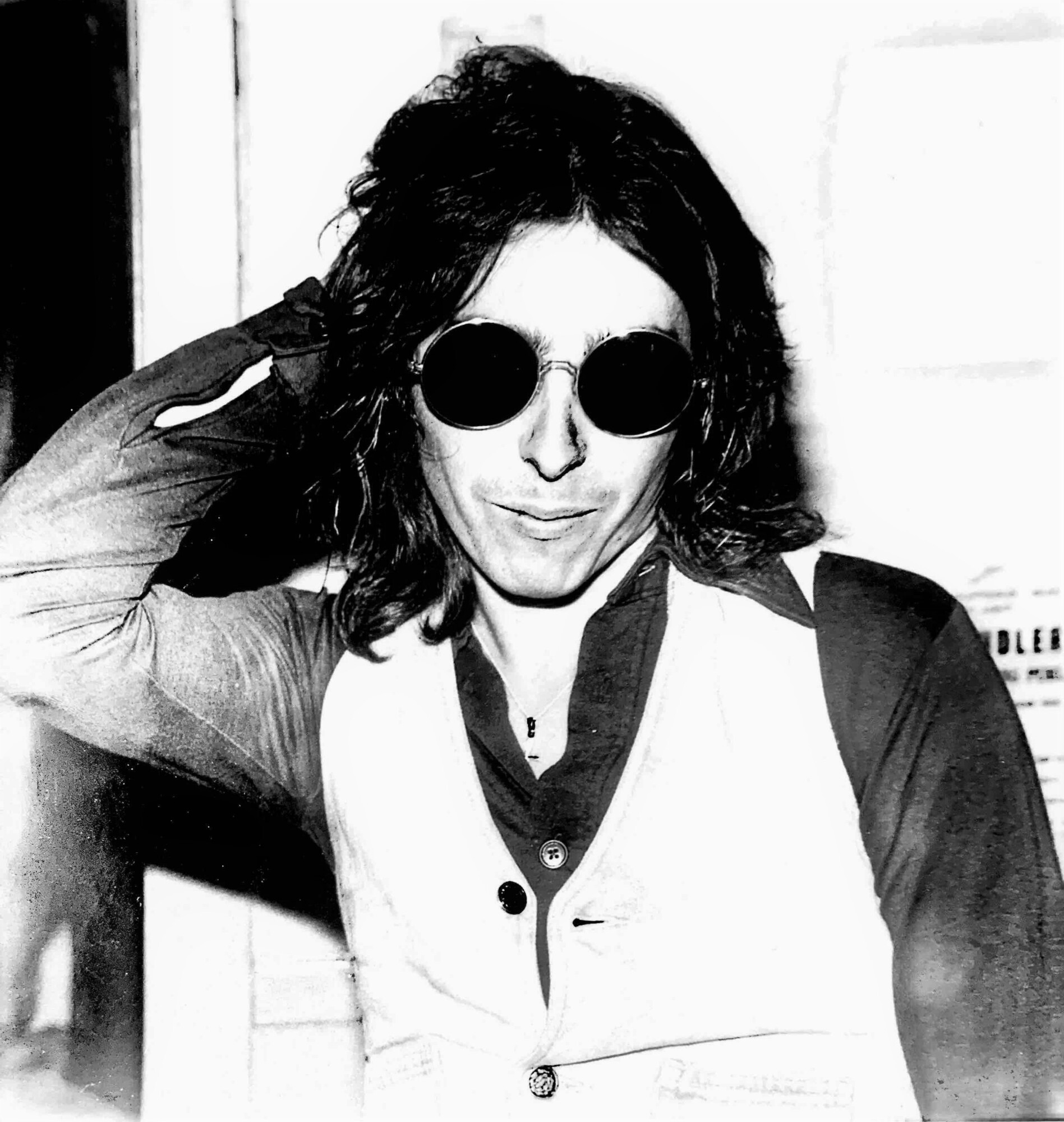
“I think we were one of the first bands to entirely consist of cult influences”
Where and when did you grow up? Was music a big part of your family life? Did the local music scene influence you or inspire you to play music?
Edgar Breau: I grew up in the east end of Hamilton, Ontario, a steel town much like the rust belt industrial cities of the USA. Of course there were other industries there but we were The Steel City. Born February 7, 1953 on my father’s birthday I also took my father’s name. Yes, both parents loved music, went dancing, dad liked artists like Hank Snow, the Nova Scotia cowboy, smooth voiced Jim Reeves, Al Goodman’s orchestra, Strauss waltzes and from time to time Italian opera. He had fought in the Italian campaign in WWII and was taken to the opera by an Italian beauty. Mom liked everything pop on the radio. My two oldest sisters would play Elvis Presley, Jerry Lee Lewis, Hank Williams 78 records and cajole their younger brothers into being dance partners. For sister Maureen it was American Bandstand with Dick Clark, sixties girl groups like The Chiffons, The Shirelles and then The Beatles and The Rolling Stones, Leonard Cohen, Jan and Dean, all of a.m. radio. She played guitar as well, early Joan Baez Vanguard recordings. I soaked all of it up at last latching on to The Kinks as my favorite band. Eventually at 16 seeing them in Toronto at Ronnie Hawkins’ Hawks Nest in support of ‘Arthur’. My father worked in a penitentiary as a prison guard and we were often regaled at dinner time with stories often violent and grotesque of the goings on at the Guelph Reformatory. Our French Acadian relatives would visit along with our more pious Irish Catholic aunts, uncles and cousins on my mom’s side. At one point we reached a high of 15 people living in our modest home and my siblings and I began to get a little wild.
When did you begin playing music? What was your first instrument? Who were your major influences?
I was thirteen when my brother in law gave me a Harmony acoustic guitar. I learned chords from a Gordon Lightfoot songbook and began learning Bob Dylan and Donovan tunes, their early folk songs. ‘Catch the Wind,’ ‘Hey Gyp,’ ‘Colours’ from Donovan and I remember doing ‘I’ll Keep it with Mine,’ the Bob Dylan song. I performed at a school concert shortly after doing a Tyrannosaurus Rex song called ‘Scenescof’. I had picked up their first import LP, ‘My People Were Fair And Had Sky In Their Hair… But Now They’re Content To Wear Stars On Their Brows’ at a local music instrument store. My record collection began to grow. The Doors, Moby Grape, The Byrds, Sir Douglas Quintet, Toronto’s great Kensington Market, Nazz, The Move, Pink Floyd, Soft Machine et cetera.
What bands were you a member of prior to the formation of Simply Saucer? (Are there any recordings of that)
No, just a mock Beatles monster band with broomsticks in front of my classmates. I converted their lyrics to horror typology, “I want to hold your claw!” influenced by horror films and TV series like the Munsters. I couldn’t have been more than 9 years old.
Can you elaborate the formation of Simply Saucer?
Yes, I had a schoolmate, Paul Colilli around age 15 who, like myself, was an avid record collector, the Canterbury bands like Soft Machine, Caravan, Egg,…Pink Floyd, Nazz, The Byrds, Italian prog band Le Orme et cetera. Paul Colilli was taking classical piano lessons. We began meeting in his home writing songs, some of which are on tape somewhere. We shopped for records at Bob Moody’s record bar where we met David Byers who was into The Pretty Things, The Velvet Underground, Tim Hardin, Lesley Gore, The Shangri-Las and Dutch bands sent by his cousin from Holland like Wally Tax and The Outsiders, Group 1850, Supersister and the wonderful Annisette Koppel and her Savage Rose band. David years later would hang out with them at their commune. A very intense, eccentric wire drummer by the name of Neil de Merchant would by scads of records, a lot of jazz, Bob Dylan, The Beatles, Van Morrison and prog rock and would eventually join the band, but first it was David Byers, Paul Colilli and myself that would begin rehearsing at Wright’s Banquet Centre with a jazz drummer who’s name I’ve forgotten. He wouldn’t always make it as he played in a country band often on tour.
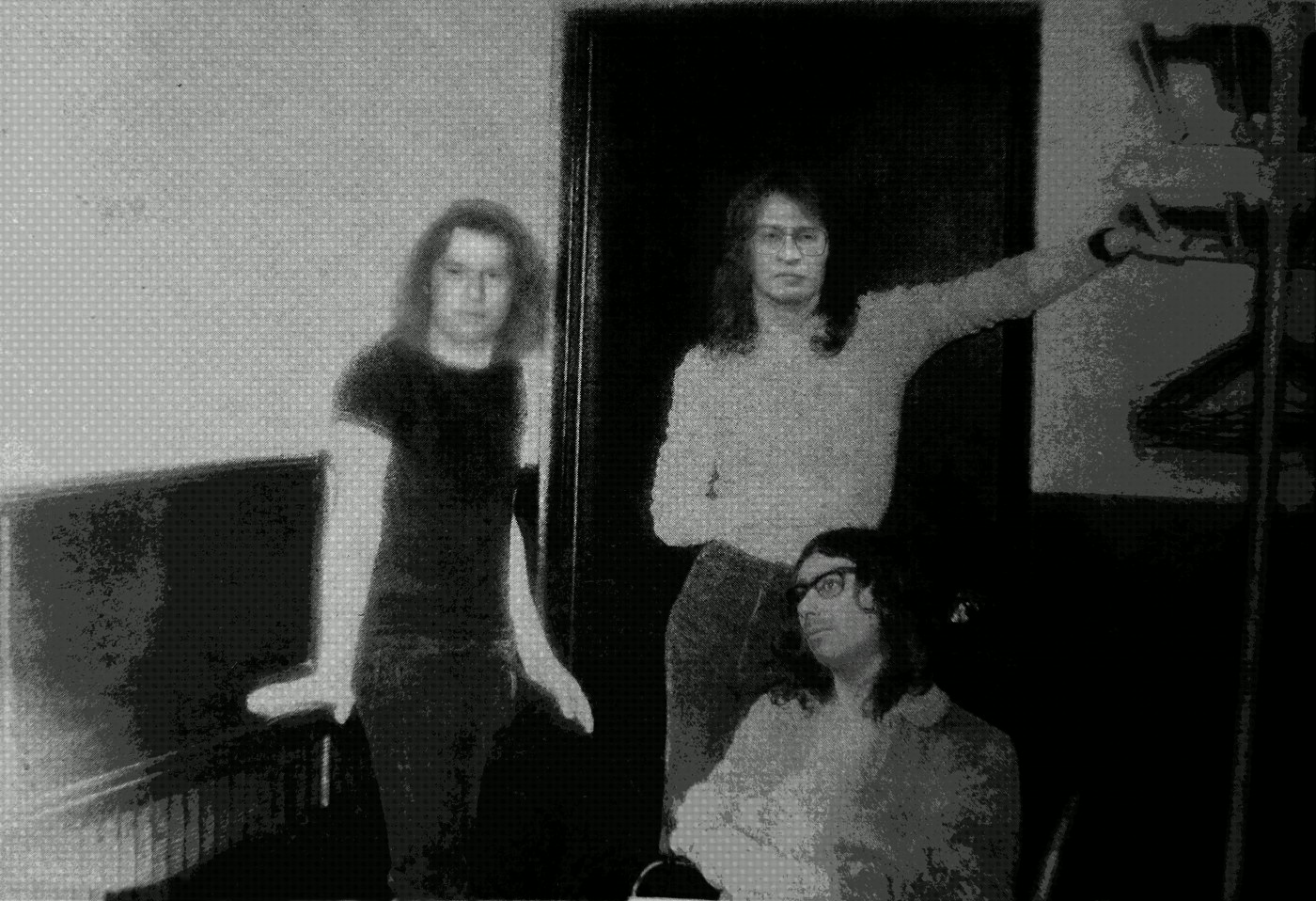
Our songs were experimental and free form, much of it improvised. All of us wrote. Things were progressing well, but we lost the rehearsal space and David found a third floor loft in an abandoned warehouse and moved in there. By this time we had added a bass player, Kevin Christoff, a schoolmate of my brother, Paul. He swore up and down that he could play “weird bass” when questioned by Paul and indeed he could when he understood what we were going for. Kevin was influenced by some greats, Jack Bruce, Paul McCartney and later by Hugh Hopper of Soft Machine. Next Neil showed up with his Pearl drums.
The Breau family besides having boarders, aunts who were really cousins, uncles and a recently abandoned sister with four children all living with us at one time or another also had two foster children, John and Susan. John, so wanted to play in the band and so I suggested playing an audio generator which Hawkwind used on their first LP. David went to Heath kit’s in Toronto, an electronic kit supply store and came back with two of them. One of them I played, the other Ping Romany (as John had renamed himself) played. You could get weird pulsing frequencies both high and low. Jamming the dials got you blips. Soon John came to practice with an original Mini Moog and an echo box. I picked up a Gibson maestro theremin to add to our electronic arsenal.
Paul Colilli was playing a Farfisa organ and David Byers had a sax and flute going through a maestro effects box. Also an electric guitar.
David, Paul and I were writing songs. David’s ‘Brain Scan Repairs’ (he worked in a hospital) and my ‘Half an Hour Later’ were both long and highly improvised. Often we would just improvise with David chanting into the mic. We had discovered Can by this time and Amon Düül II, Kraftwerk, all that “krautrock”. We learned to improvise. At this time we weren’t playing live.
There wasn’t exactly a power struggle going on but there were arguments about a stage show, clothing, David wanted makeup ala New York Dolls and glam bands, I was more into a The Velvet Underground look and we were all very sure of ourselves. Eventually, Paul and David left to form, briefly, The Neural Angels, David dyed his hair blonde and began hanging out at gay clubs and into a new thing for him. Eventually, he formed the cult band, The Shangs, who made excellent mystery pop albums. Paul launched his secondary education with the help of an insistent Italian father, who saw his academic potential eventually become Professor of Italian studies at Laurentian University. Paul would go on to write esoteric/philosophical books with titles like “Agamben and the Signature of Astrology” or “Vico and the Archives of Hermetic Reason”. He would decades later return to music with two fine albums and reunite with David, Kevin and I as Saucer 73, recording an album not yet released.
When and where did Simply Saucer play their first gigs? How was the band accepted by the audience?
After a brief hiatus contemplating the next step (I was quite distraught at the breakup), we found a narrow store space in the east end of the city and christened it “The Office,” moved our gear there and I decided to live there as well sleeping amongst the amps and guitar chords on a thin piece of foam with no furniture, bath or shower, stove. Eventually there was a fridge. It was a rough part of town with rival gangs battling it out a violent bar across the street and street toughs knocking late at night asking me to store some dubiously possessed Harley Davidson MC’s there for the night, sometimes thugs came with tire irons down there pants to teach me a lesson, there were biker gang pool cue beatings on our doorstep, theft of equipment, ex boyfriends of lady friends showing up threatening me with knives, but the band played on, left for home after practice and I stayed couped up in The Office. It was here that all the songs on ‘Cyborgs Revisited’ were written. Ping would come from home with lunch for me. I would sneak home for a shower. My father was disenchanted with my chosen profession! He was now working at The Barton Street Jail in town, sometimes seeing our former schoolmates there up on charges for a stay. But the band rehearsed intensively. I was a strict taskmaster, we rehearsed every day including Christmas (!) and dared to miss practice and there would be a withering look and words about it. We had learned to improvise at The Loft and now I was putting that free form jazz like soloing in my more structured songs which I was churning out at a terrifying rate, obsessed as I was with ambition.
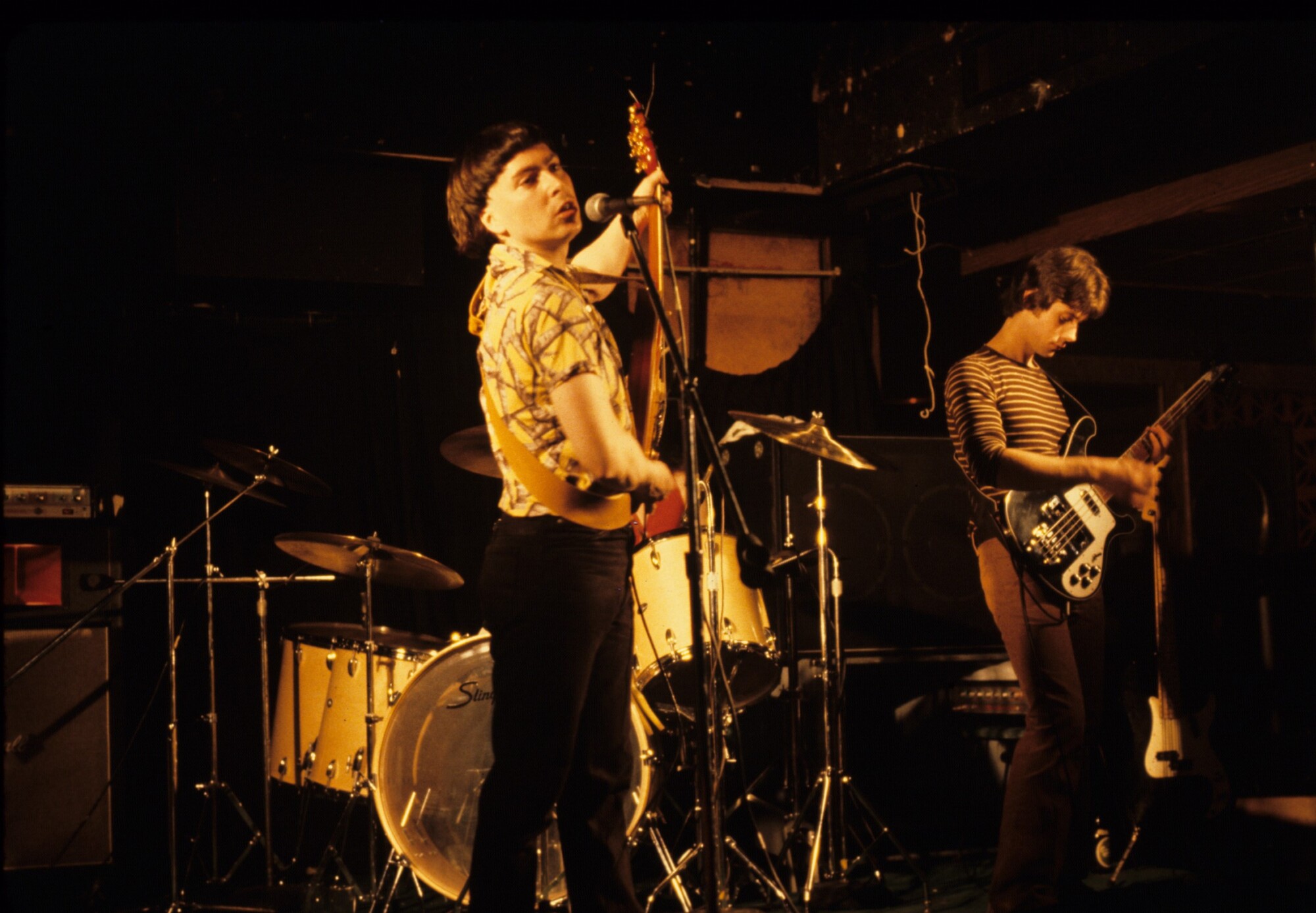
“There was always a fear of technology running amok in our ethos.”
What sort of venues did you play early on? What were some of the bands you shared stages with early on?
The next step was finding a manager and an import record store mogul who just arrived from Montreal heard about us and came down to hear us. Impressed he met with us and began to put together a plan, always while stirring his coffee. His name was Rick Bissell. Our first show was at St. Albans Anglican church not far from our rehearsal space. The good vicar there booked us for an afternoon of entertainment convinced no doubt by Rick’s laudatory praising of our enchanting show. A good crowd of locals showed up.
We started the set as always with Ping’s pre-recorded electronic piece, ‘The Tinder Source,’ then launched into ‘Here Come the Cyborgs,’ which I had envisioned as the album title for our first album, which of course would launch the band to stardom. It was a kind of mock of ‘Meet the Beatles,’ we would take that to another level. And who were the Cyborgs? Of course, WE were. There was always a fear of technology running amok in our ethos.
Anyhow, the next song was called ‘Noise’ and I remember writhing on the floor as I played the Audio Generator during its 20 minute duration. Neil, the drummer, fancied himself a violinist, and played it with a top hat and a frock coat as he broke string after string and the wailing was “bracing?” shall we say. By this time, the fighting in the audience was getting out of hand…we launched into an extended version of ‘Illegal Bodies’ at “ear deafening” volume as the police arrived. Well it was our debut and we eagerly awaited our next one.
Rich launched us on a tour of southern Ontario high schools outdoor talent shows and arenas.
He assured the principal in one small town school that the band was “perfect.” I heard him say it, for the graduation prom. Well after our first set there the principal of the school, teary eyed, begged for us to play something recognizable and could we turn down the volume?
We knew that the students would come around in time and launched into ‘Electro-Rock’ off of ‘Cyborgs Revisited’ and soon the kids in their lovely gowns and suits formed a weaving, writhing conga line with happy smiles as the Saucer lads expected.
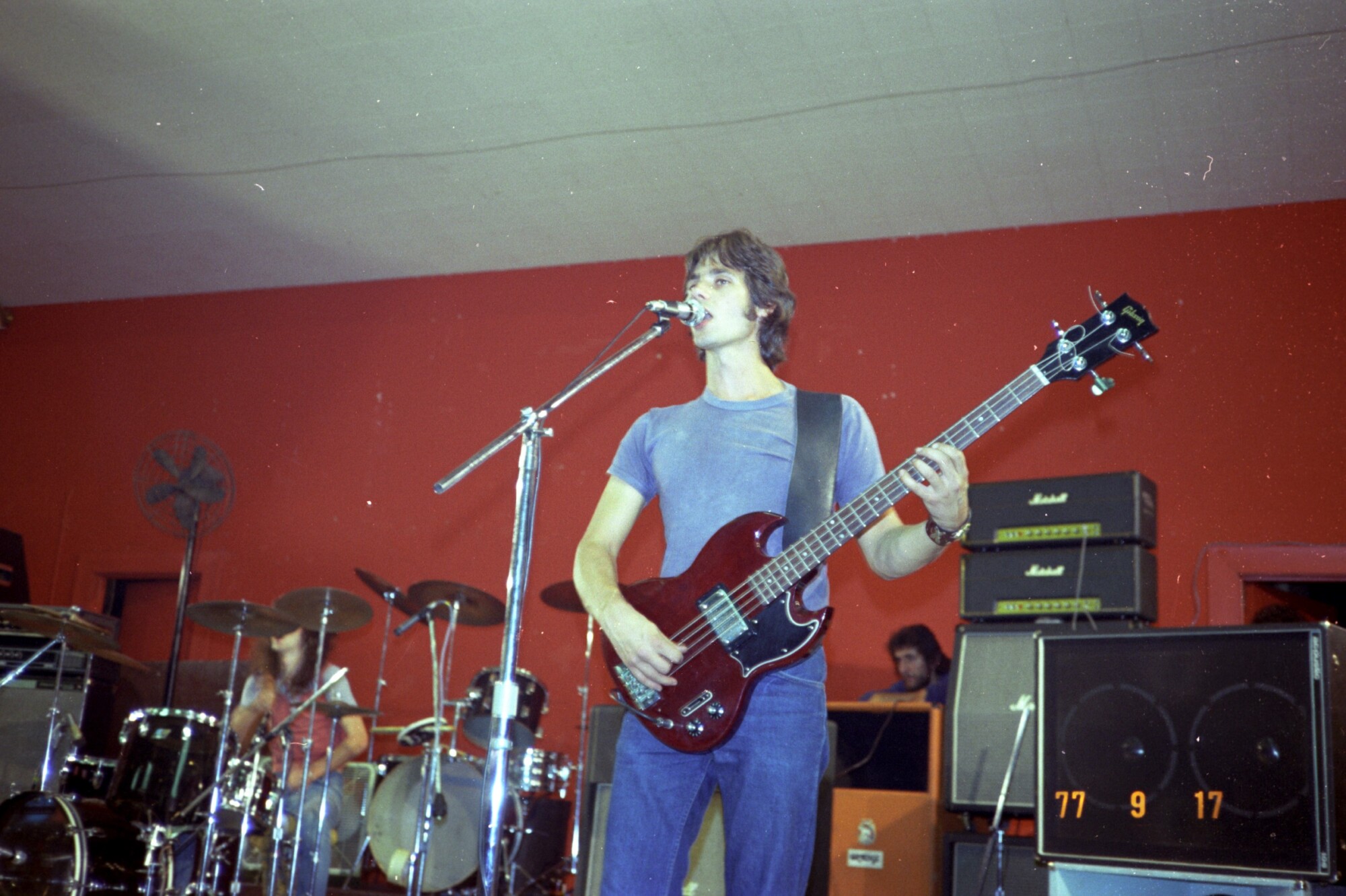
There was a bump on the road to success as the club owner at Oakville’s 707 Galaxy club didn’t take to Ping turning up on stage in a complete skin diving outfit. The club’s name belied their earthly preoccupations and we were speedily assisted off the stage after only three songs not giving the patrons time to “get” us. Neil was aggressively thrown out the door by a burly bouncer. We shook the dust off our feet and headed for Kernahan High School in St. Catharines Ont a week later.
Despite playing what I considered an exemplary set we had to dodge projectiles throughout from no doubt jealous boyfriends as the young ladies were curiously gazing at us. Kevin and Tony were teen idol types especially young good looking Italian little Tony all of 16 years of age on the drums. We had arrived in his old convertible white Cadillac, which didn’t help with the young bucks attending. We departed with their vulgar chants ringing in our ears unaware that our brake cables had been cut!
In Carleton Place Arena just outside of the nation’s capital, Ottawa, we played an ambitious set after over indulging in “mood helpers.” Calls of “play some ZEP” were answered with “how about some Hapshash and the Coloured Coat?” Although we lost some attendees along the way, there were a couple who stayed to the bitter end declaring it “an amazing show.” One of them would go on to work for Capital Records Canada and become a Kinks Chronicler online.
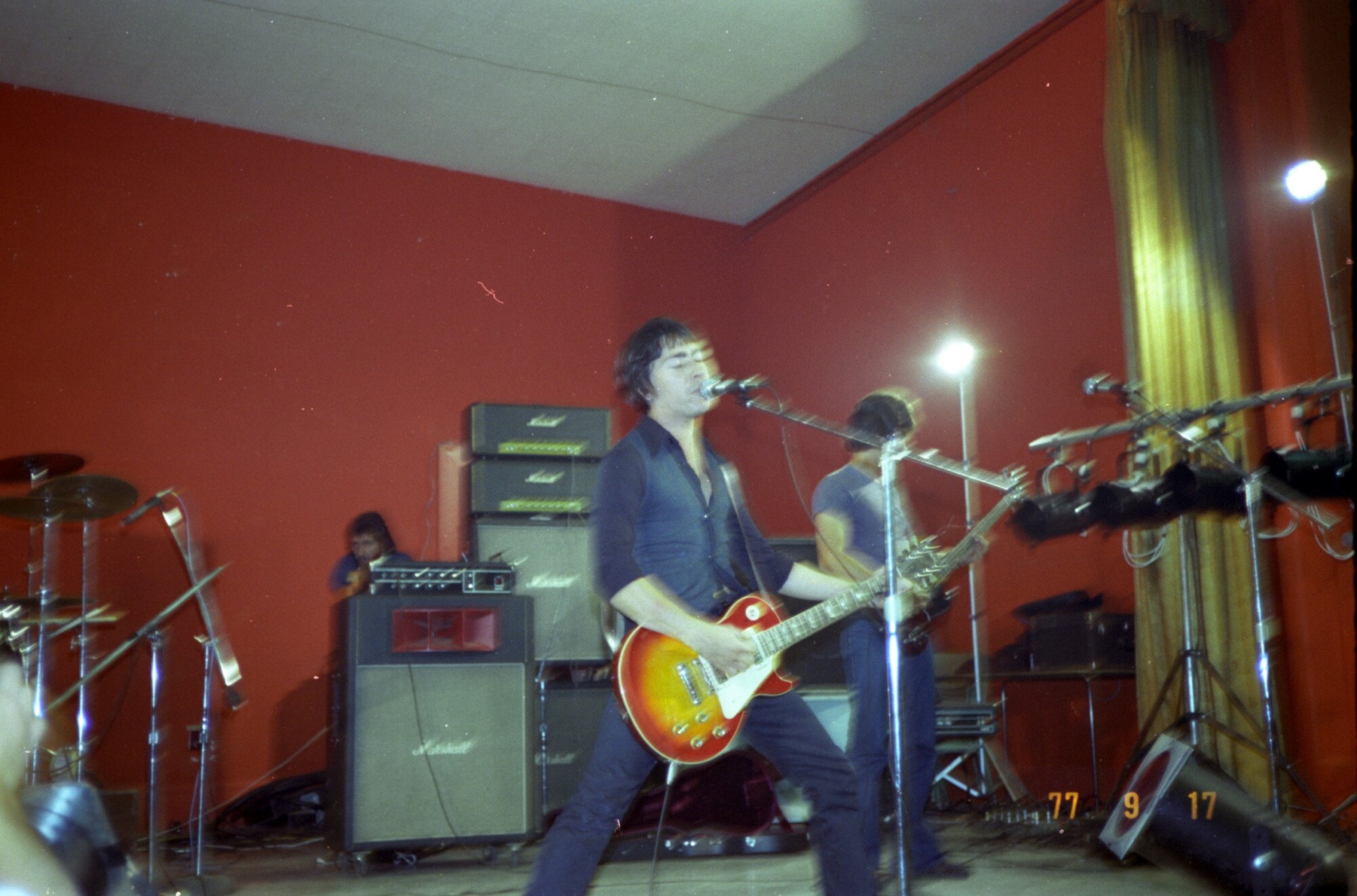
Our manager was getting nervous about it all. We did our shows headlining his package tour of Mindy Madden, a folk singer, John Balogh, a hippie comic and Simply Saucer. We drove up to Mindy’s parents cottage. Just Rick, Mindy and I.
Rick slapped a document down on the table and said “sign this.” It was a personal management contract giving Rick total control of the band. He could hire and fire and wanted to surround me with a platform heel classic rock lineup. Those were his conditions for staying on, which after a bit of thought, I refused. So Rick left us taking with him our recording tapes from Master Sound Studios, which I wouldn’t see for another 15 years until he returned them and they became side one of ‘Cyborgs Revisited’.
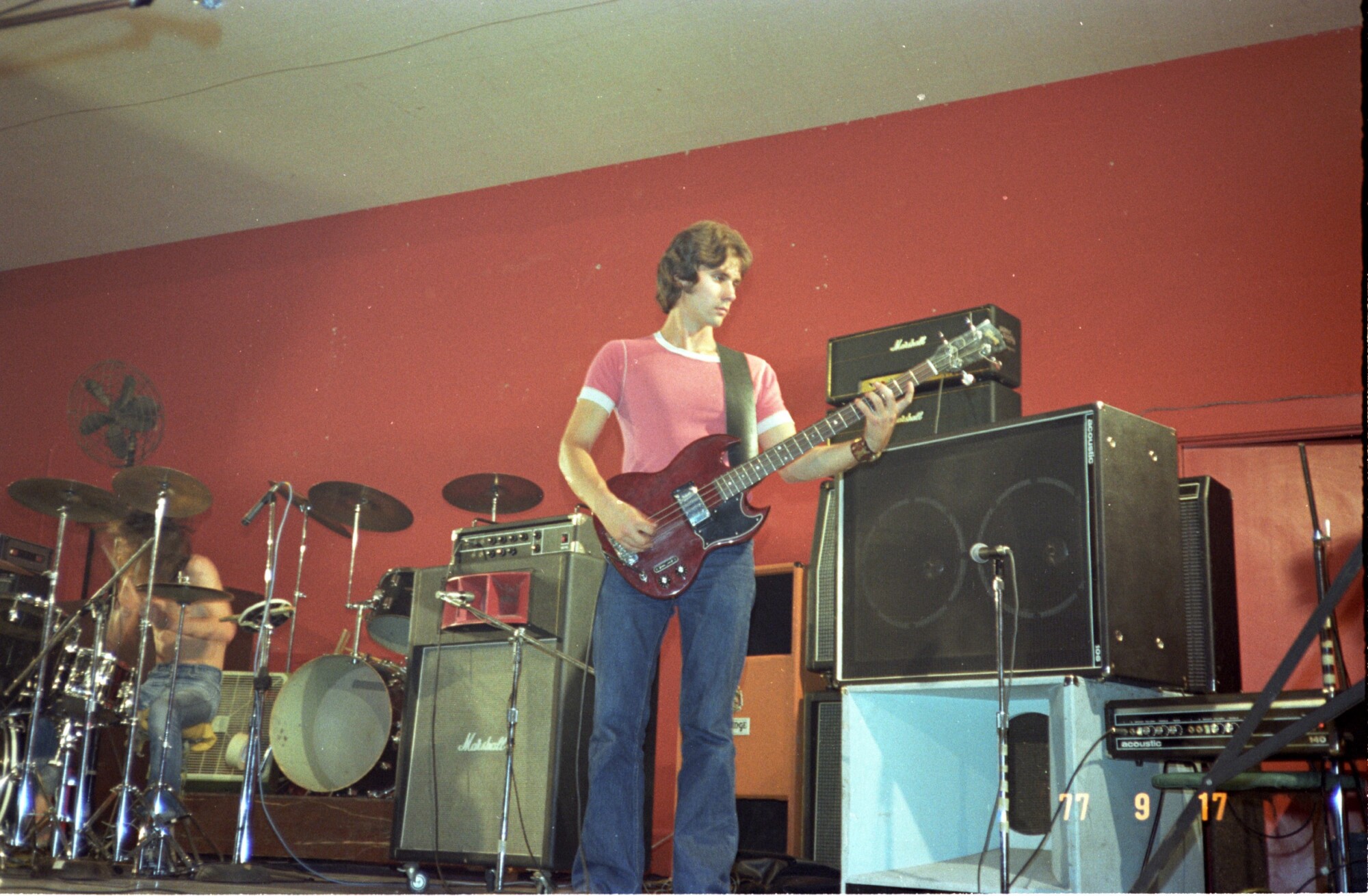
What led to the name “Simply Saucer?”
I read all the English pop music mags and at the back the gig listings. “Just Us” were an English jazz band with Elton Dean and Lol Coxhill, I believe. I wanted a word like “Just” and came up with Simply and Paul Colilli, Pink Floyd fan, after their second album ‘A Saucerful of Secrets’ added Saucer, thus Simply Saucer.
When we played some Toronto punk fests, the early ones, the promoters Pushbutton Promotions, said “No, no, no…you’ve got to change the name of the band, that just won’t do…we love your music, but the punk audience won’t accept the name.” They suggested some rather outlandish monickers which we declined [laughs]. That was not going to happen.
What influenced the band’s sound?
I think we were one of the first bands to entirely consist of cult influences. When ‘Cyborgs Revisited’ was first released reviewers were surprised at the polar influences of both Syd Barrett’s Floyd and The Velvet Underground and The Stooges, Stockhausen, Sun Ra. We also included an alt country song in our set early on, something Dylanesque. I was a big Moby Grape fan and liked that riffy roots style of Jerry Miller. You can hear it on ‘I Can Change My Mind,’ the flip side of ‘She’s a Dog’. The guys in the band were very open to the genres that I would write in, never refusing to try an arrangement. I think the jazz we were listening to Coltrane’s ‘Ascension,’ Eric Dolphy, free jazz, Ornette Coleman gave us a sense of how to improvise and the attitude of “go for it” when you solo.
There were also important literary influences which lent themes to the music. I was reading H.P. Lovecraft, David Lindsay’s philosophical sci-fi masterpiece, A Voyage to Arcturus, Jack Kerouac with whom I shared a French Catholic perspective and devotion to Saint Teresa of the Child Jesus, the French mystical saint. There was an occult phase reading Louis Claude de St Martin and A.E. Waite, member of the Order of the Golden Dawn, novelist and designer of the Waite Rider Tarot deck. Horror fantasy like William Hope Hodgson’s The Nightland, Mervyn Peake’s The Gormenghast Trilogy, drummer Neil DeMerchant took the name Steerpike from those novels, the novels of Charles Williams, supernatural detective stories, who was championed by rock writer, Wayne Mcguire in Fusion and Crawdaddy. He was disliked by Lester Bangs for his “mysticism,” but became an influence on me. He was a devotee of Mel Lyman, the would be Messiah, harp player editor of Avatar out of Fort Hill in Boston. Compared his harp drone to John Cale’s organ drone. Pieces on John Fahey and The Stooges, Wolfram von Eschenbach’s Parsifal Arthurian romance. I had the commune records, they were spooky. Chris Stigliano is a fan as well. Anyhow, that was an influence. So there was a lot going on in my head. Finding my way so to speak.
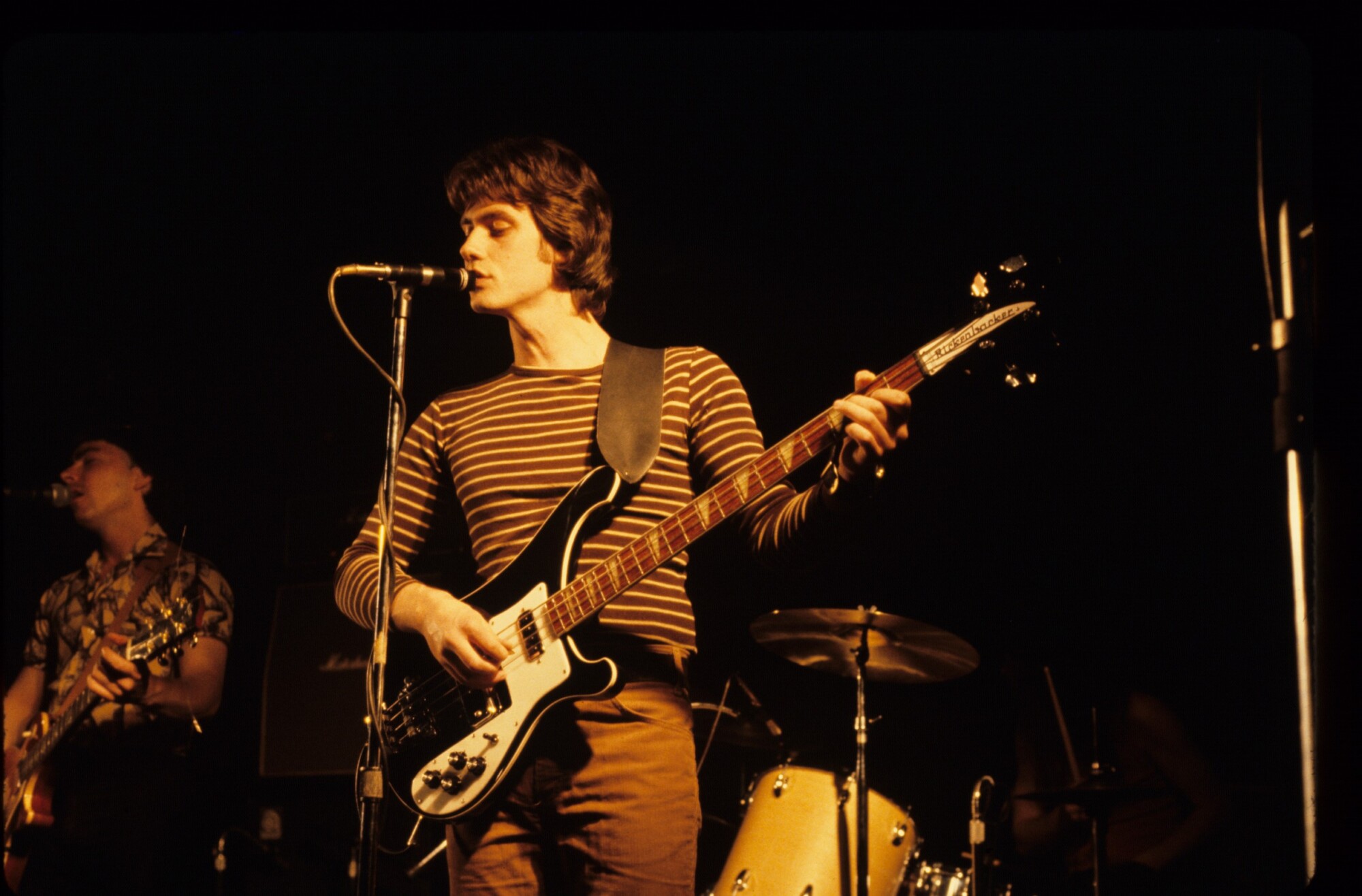
You were active for several years until you released your first single. Would you like to tell us how the lineup changes? What did the repertoire consist of in the early years pre-1975?
Yes, Ping was disconsolate over Rick Bissell leaving and our lack of gigs, became lacklustre and I was looking towards streamlining our sound, listening to Television and the Talking Heads, the new sounds emerging from New York. John left and we replaced him with first Alex Pollington and then Steve Park who had played previously with Gary Pig in The Loved Ones and before that with Teenage Head who were poised to become a big Canadian band. Steve was a great fit, an excellent electric guitar player and singer and the band, newly revitalized and with the help of Gary Pig started gigging in the developing Toronto punk/new wave clubs, refining our stage show.
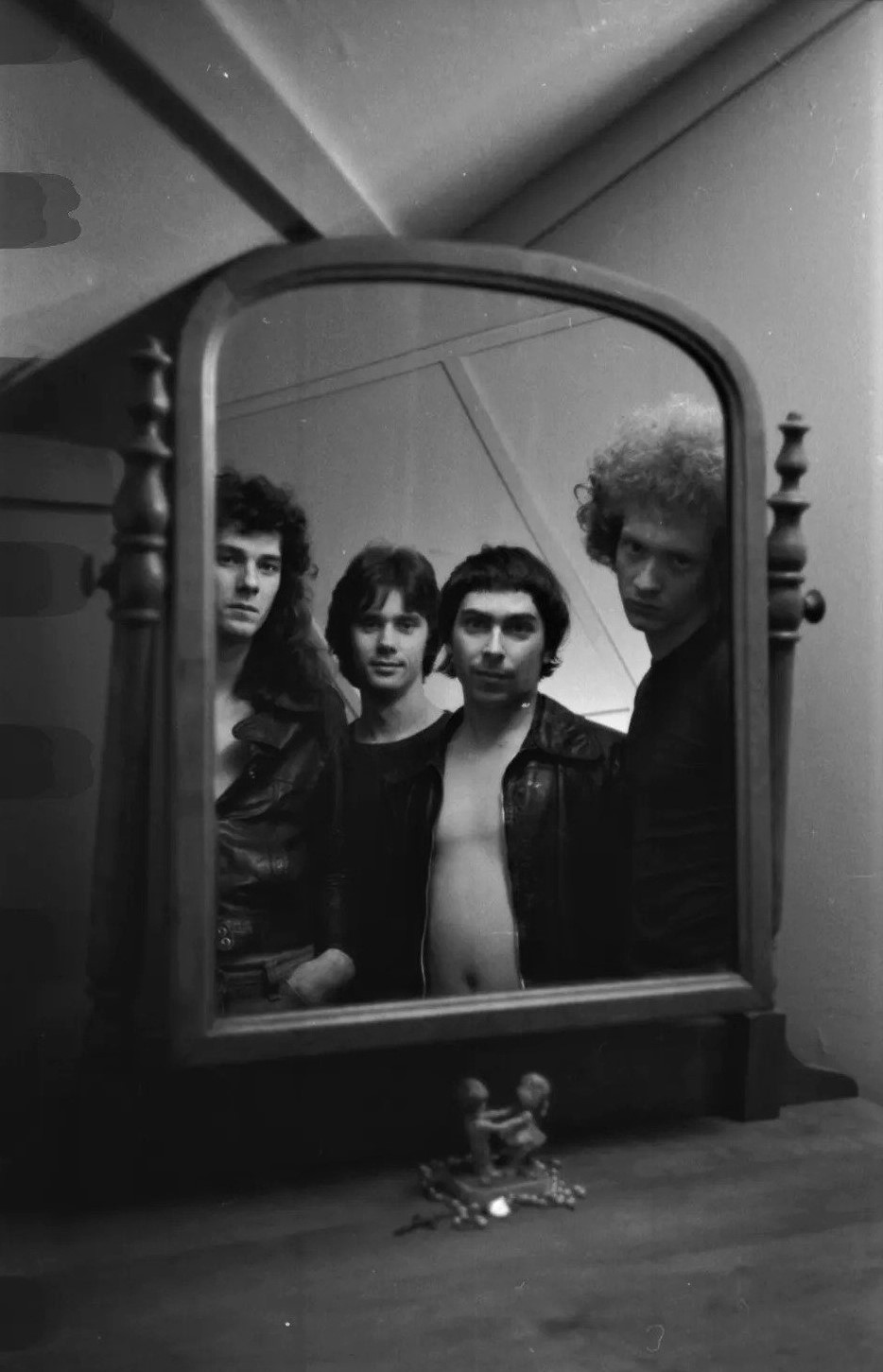
The very first recording you released is a fantastic single, ‘She’s a Dog’ / ‘I Can Change My Mind’ through Gary Pig Gold’s Pig label. Where was that recorded and what do you recall from writing and recording it?
When I started the song it was slow and a bit Viv Stanshall, but we tried speeding it up and it became a crowd favorite. The opening line “She should be on a leash…” was from an offhand remark David had once made. It’s not about an ugly girl, “maybe she’s pretty” but that “she’s got no personality”. When we played it on our most recent tour Craig Bell (Rocket from the Tombs) suggested we should all start barking after the final chord which we did to amused expressions off stage. Once we did it in rehearsal and this uppity stage manager said to me “You’re not going to play that one are you?” She was very pushy about it. We did play it. It was a bit Velvets, Richman sang kind of in a bubblegum rock voice. I did like the Ohio Express and a San Fran group called Milk ‘N’ Cookies at the time. But it was pure Simply Saucer and England’s New Musical Express made it “pick hit single of the week, a bit Kinks/Who”. Steve Wynn (The Dream Syndicate) told me he loved the single and played it at the L.A. record store he worked at. We did some shows with them in Toronto. It ended up being the only recording we were known for after our breakup in 1979 until the posthumous release of the earlier recorded ‘Cyborgs Revisited’ LP on Bruce Mowat’s Mole Sound Recordings.
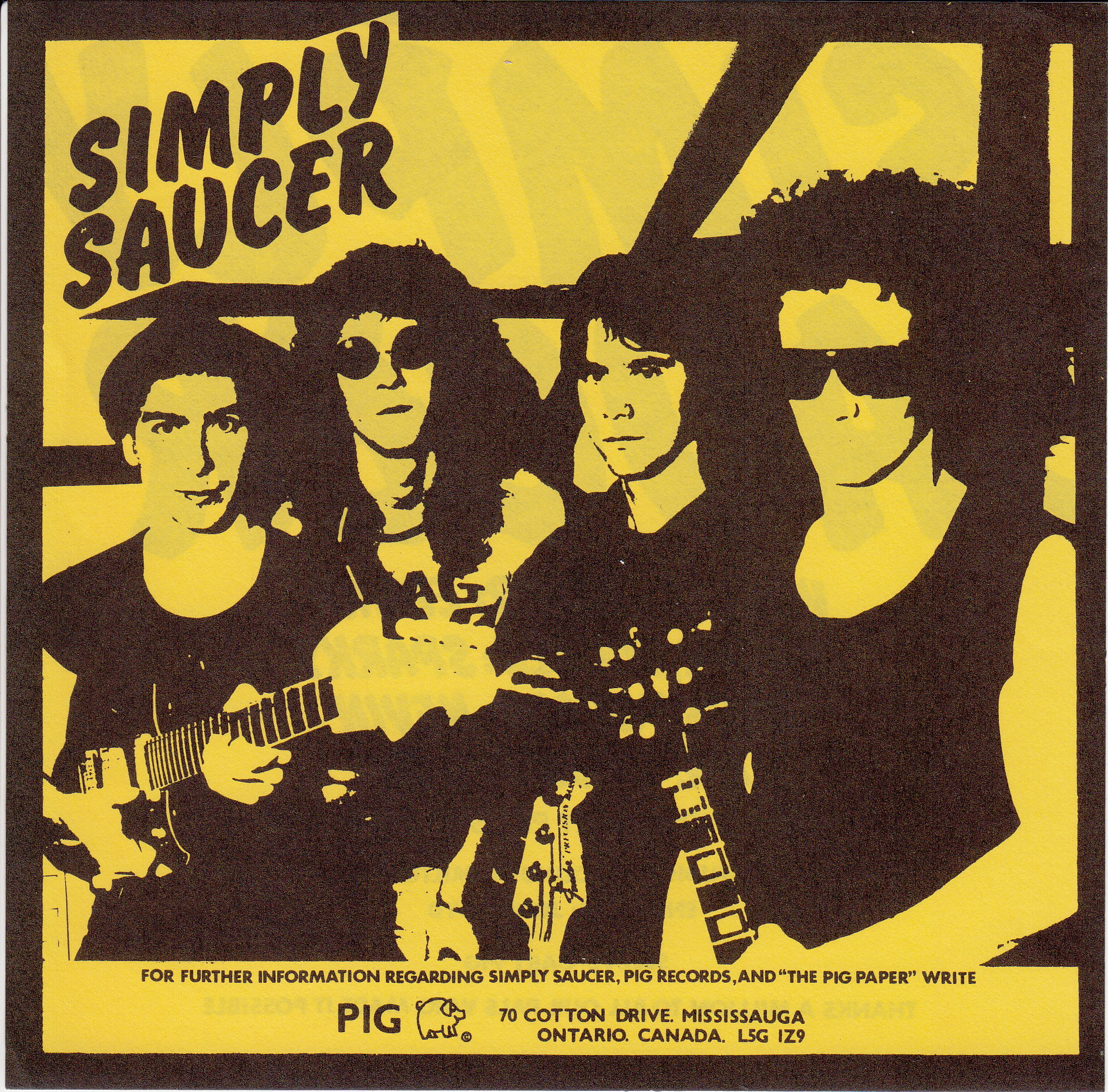
Tell us more about Gary Pig.
Well Gary had wise advice for the band. “Move to L.A.! or N.Y. or London” which we needed to have done for success. I think, perhaps, London would have been the most inviting place. We became involved here with a destructive cycle of ever more chaotic communal living, excessive drugs and oceans of alcohol, there were robberies with machetes at my neck, heroin addictions, gun running, mob shakedowns, drug dealing in a big way. Lovely boys really and lifetime friends, but things got out of hand, shortly after I left one of our close friends and roadies pointed a shotgun at his head and blew his brains out and I avoided anything “Simply Saucer” for a long while unable to reconcile the music with the lifestyle.
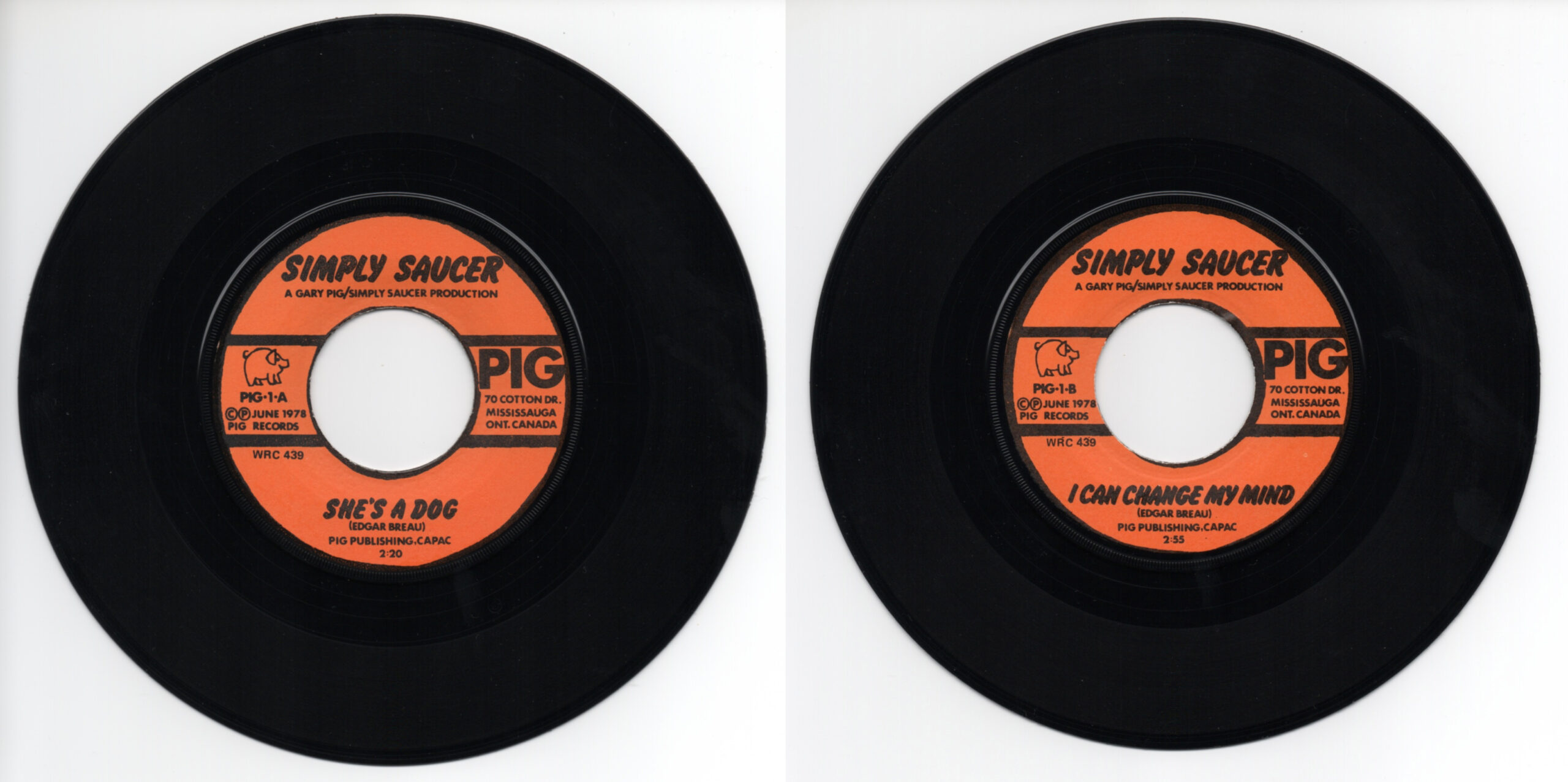
I had met Gary at the 3D Punk show at the Ontario College of Art in Toronto. One of the bands, The Doncasters played ‘I’m Not Like Everybody Else,’ The Kinks song and I cheered long for that. Gary Pig and his photographer friend John Pinto turned around and introduced themselves and Gary asked if he could come and interview me about The Kinks in his new music fanzine The Pig Paper. They showed up in Hamilton, did the interview and heard the band. Gary became an informal manager, adviser and soon we were playing in Toronto clubs as part of the burgeoning punk/new wave scene.
Gary had many influential contacts throughout Canada and the U.S. and helped get the word out. He himself eventually “left town for L.A.” as I sang on ‘Saucerland’ ‘The Story Of Simply Saucer,’ where he continued his journalism and musical career.
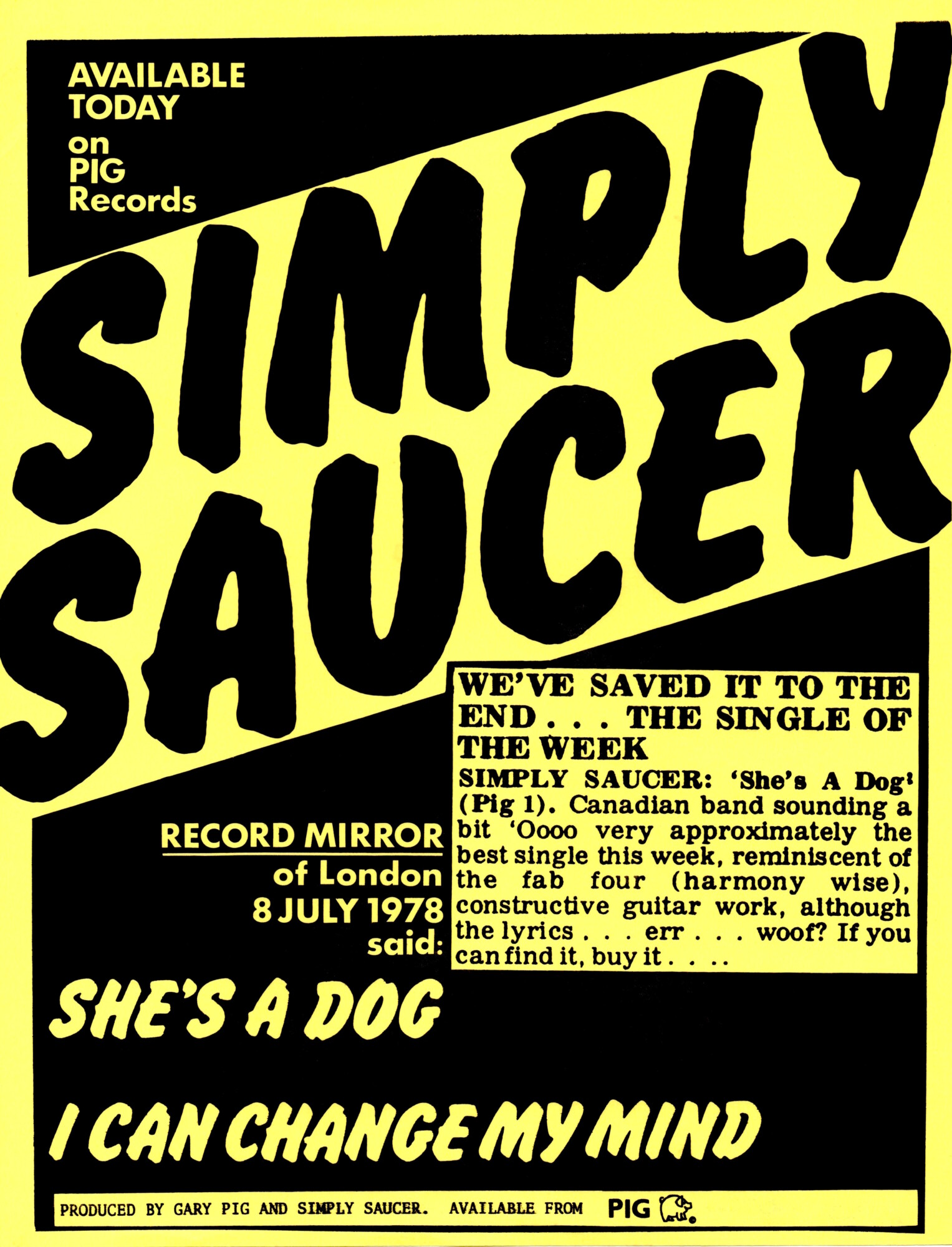
Did you send the single to any radio stations or labels? Did you get any feedback?
Yes, England’s New Music Express called it “the pick hit single of the week, Kinks/Who.” Years later after doing a show with The Dream Syndicate, Steve Wynn told me he loved the single and played it at the record store he worked at in L.A. I’ve included a live version of ‘Flag of the World’ from ‘Shadows of Ecstasy’.
It’s incredible that the band hasn’t got signed. Luckily we have some truly fantastic recordings left. Tell us the recording session with Daniel Lanois and Bob Lanois from 1974. How did that come about?
That was set up by Rick Bissell, our manager who had come to Hamilton from Montreal and set up an import record store called, Hermandades. Rick made some inquiries and we went to an initial meeting at the Lanois’ (Bob and Daniel) mother’s home in Ancaster. The studio was in the basement of the house. We talked to them and I left copies of White Light/White Head by The Velvet Underground and The Stooges ‘Raw Power’ LP to give them some idea of what we were looking for in terms of sonics. Bob’s mention of Eagles’ producer, Bill Szymczyk had sent alarm bells ringing in my head, but as it turned out, Bob adjusted well to what we were doing and kept a tight rein in the studio. Many years afterwards he would recall wielding the whip on our unschooled ways and “co-inventing punk rock” with us but we were actually wanting that raw sound and pretty well rehearsed. I was a stern taskmaster back at The Office, we rehearsed every day of the week, even on Christmas Day! Driven!
Daniel Lanois, contributed occasionally, there was a moment where he sat cross legged on the floor, eyes shut, hands over his ears, listening to these young green ackward skinny upstarts. Little did he know that Ping was a devotee of the man (Brian Eno) whom he would encounter at Grant Ave Studio years later and launch his career as a producer into the stratosphere. I wonder what he thought sitting there on the floor? Was it agony or ecstasy? I’m certain it was one or the other. As well, Dan at that time was an in demand pedal steel player and played with Sylvia Tyson, Shirley Eikhard and Ray Materick. All in all things went very well and we had six songs recorded over two days.
Then there’s a live concert recorded from June 28, 1975 on the roof of Jackson Square. That was also issued on the 1989 album ‘Cyborgs Revisited’. Would love it if you could share some further words about it.
Hamilton’s brand new Jackson Square Mall was at the centre of the downtown Hamilton shopping district and the rooftop area had a concert stage. We made two appearances there. The first one we played was recorded on a Tandberg reel-to-reel tape recorder, a Norwegian company that at that time made premier quality equipment. The show was recorded on two Shure, pencil mics. The audience consisted of local fans as well as curiosity seekers, onlookers. A good crowd on an afternoon that Pink Floyd were also playing at our football team’s Ivor Wynne Stadium.
Three of the songs in that set became the second side of ‘Cyborgs Revisited’ and the rest were finally released on In The Red’s Deluxe Edition of 2020.
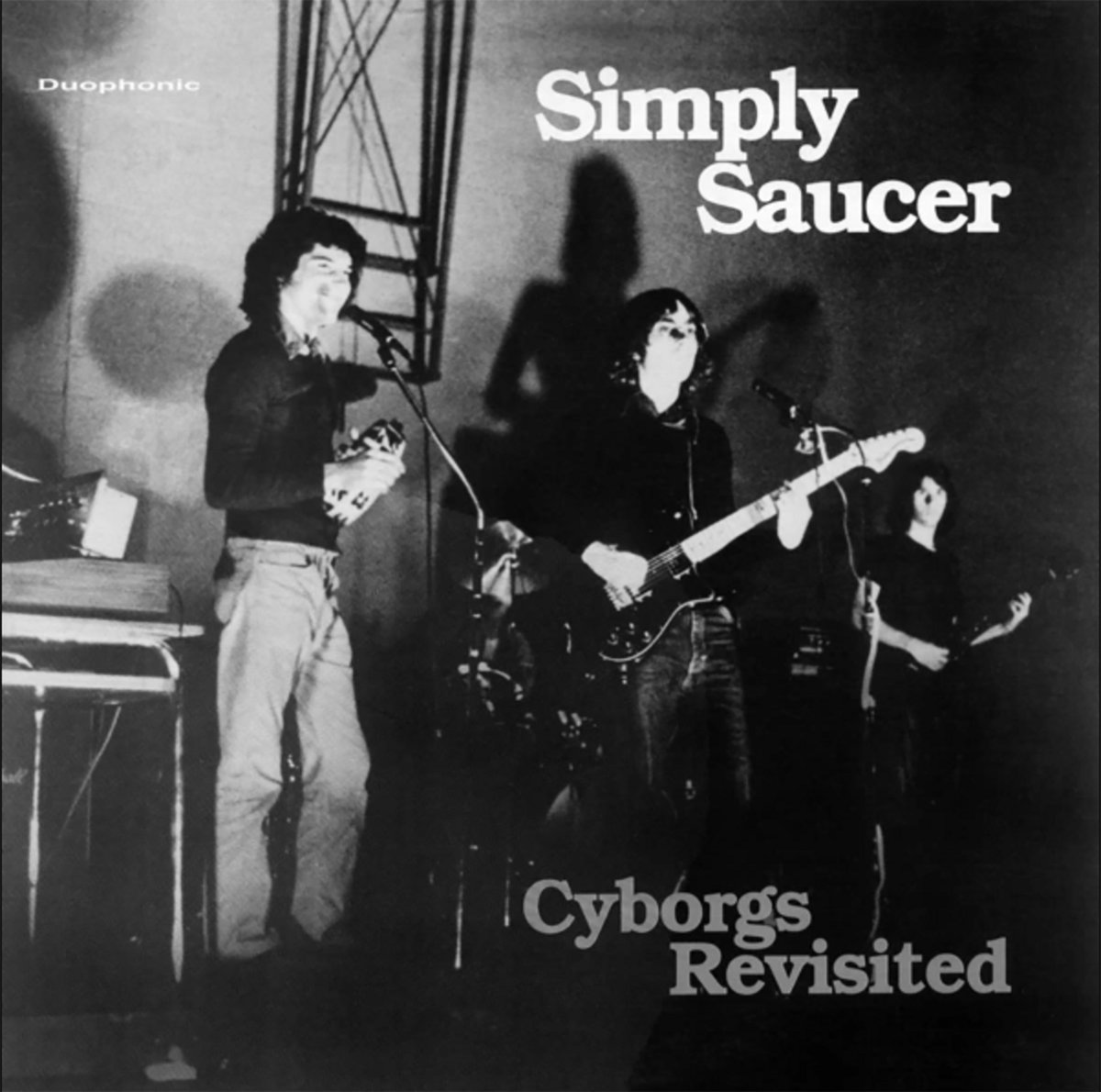
Kevin’s brilliant bass playing really shines on this show and for myself I felt loose with the proverbial “hot hand” definitely channeling Lou and Sterl who had been my mentors. The rest of the lineup Ping and Tony C. Shone that afternoon and 15 years later with the help of, again, Bob Lanois, who engineered the tapes, it became immortalized on ‘Cyborgs Revisited’. I must say that throughout the history of the band I have been fortunate to play with many wonderful musicians. All of them made major contributions contributing their own arrangements to the song which I brought to them in stripped down form.
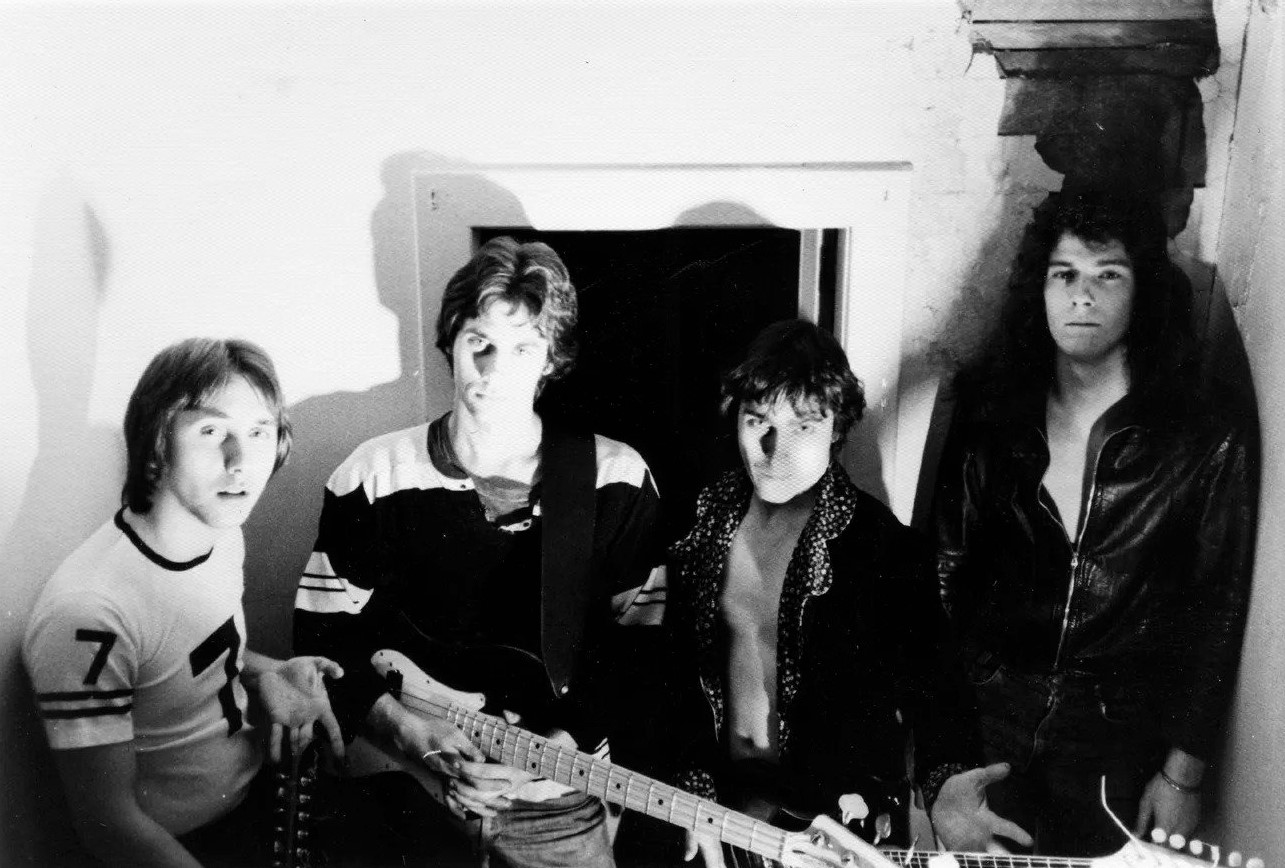
Do you feel that the Lanois brothers gave their production magic on hearing it today? On that note, what runs through your mind hearing those tracks today.
Yes, I think the Lanois bros and primarily Bob did a great job getting it all down on tape, live off the floor, rookies in the studio for the first time, feeling pressure and in an unfamiliar environment. The session holds up after all these years. Listening today and knowing that some of what we did was fortuitous accidents in the moment and that we were not hipsters in a glam sense but working class lads struggling to make ends meet, sometimes bereft of food and clothing, shacked up in a store front, without job prospects, dodging the violent action of the street, though with some martial arts training which was necessary ha ha in the east end of Hamilton, gotta protect those fingers, that overall we acquitted ourselves well.
The difference between now and then was back then, personally, I was hyper aware of my influences and trying to let my own idiosyncrasies emerge from the melting pot. With the acclaim that greeted the release of our ‘Cyborgs Revisited’. I realized that, yes, we were on to something special back then. It was reassuring.
What about ‘Saucerland’? Those are alternative takes, live recordings and demos from the years 1975 to 1978…
Our intent had been to record a full scale LP but due to financial constraints at the time, the Master Sound sessions had only managed a 6 song demo that had been rejected by all the Canadian major labels and so there was an abundance of songs left on the cutting floor. ‘Baby Nova’ was one, ‘Ring A Ling Oh My,’ ‘Clearly Invisible,’ ‘Rock And Roll The Brain Cells,’ many others and it would take years further on to see the release of them either, from live concerts or in the case of our Detroit studio EP made with Jim Diamond at Ghetto Recorders Baby Nova we recorded them properly and released it.
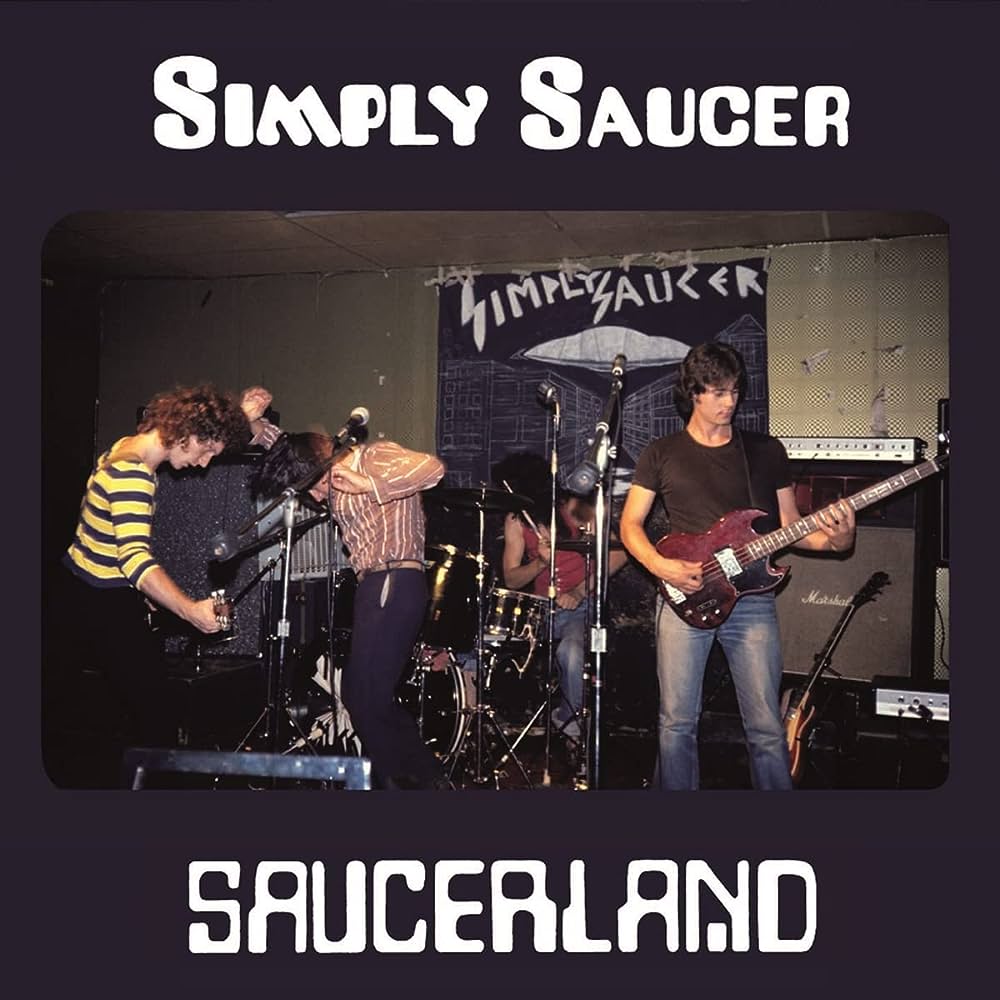
Steve Krakow of Chicago’s Plastic Crimewave, and also a journalist, art designer, promoter and raconteur, introduced us to the Chicago club scene booking us and helping us with media, inquired whether we had archival materials. I sent him everything I could find which came out on Logan Hardware as ‘Saucerland’. It sold out quickly, was received very well in 2016.
Didier Balducci of Nice, France, owner of Mono-Tone Records approached me late last year about doing a reish and we quickly got Jim Diamond on board to remaster the songs, found some new pics and it recently came out and is available all over Europe and in Japan, North America. It was a pleasure putting it all together with Didier.
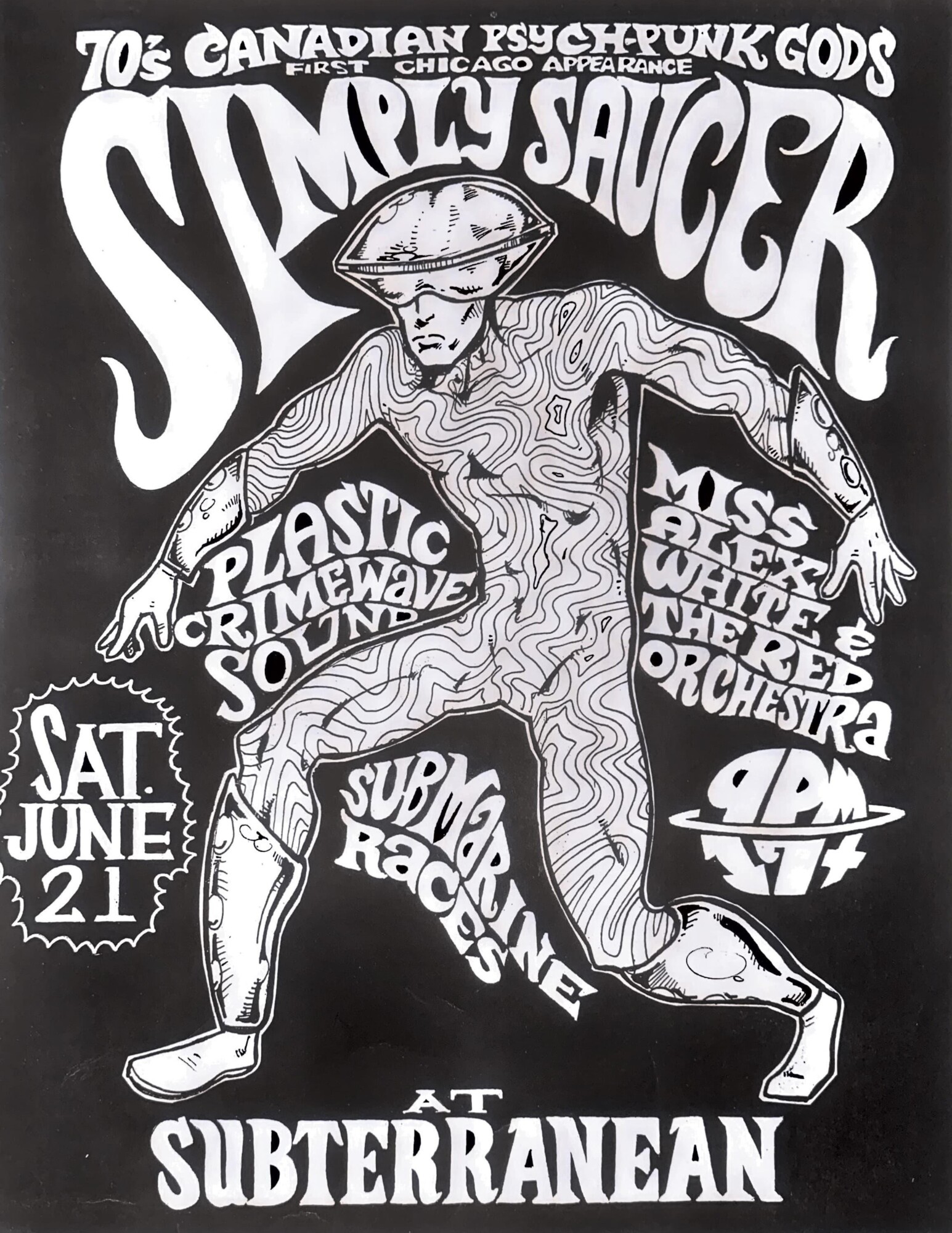
What kind of equipment did you have in the band?
I had a Gibson Les Paul, 67’ blonde Tele, Fender Deluxe through Marshall with 4×12 with horn, a keyboard amp and later an H/H 100 Watt HH V-S Musician head and 412 BL cabinet. Kevin Christoff had a Gibson EBO, Fender Precision through Acoustic amp twin 15’s. Steve Park had a Gibson SG through an Ampeg B-42X 4×12 55 with tube amp. Don Cramer had Slingerland drums then Ludwigs. Neil DeMerchant had Pearl drums. Tony Cutaia had Ludwigs.
Did you ever experiment with psychoactive substances like LSD?
I did some experimenting in the early seventies, but after a couple of harrowing experiences left that behind.
What happened after the band stopped back then?
I sold all my electric gear in order to buy a Laskin acoustic guitar at Toronto’s Mill Wheel acoustic instrument centre. Grit Laskin was emerging as one of Canada’s finest guitar makers and his guitars and in Canada’s Museum of Civilization in our capital city, Ottawa.
I was ready to begin experimenting anew playing finger style open tuning which I had learned from John Fahey albums. Mississippi John Hurt, Bukka White, Lightnin’ Hopkins, the English alt/folk scene, Pentangle, Fairport, Dando Shaft all were influential. There was a songwriting urge with a different lyrical slant that was emerging in me.
Many of my musical heroes had “another side” like Reed and Cale, Ray Davies, Syd Barrett that was polar opposite of the hard rock they were known for and this is where I wanted to go. As well, the folk roots tradition underpinned much of the great sixties bands like the Byrds and the Buffalo Springfield and in a sense it was a style of music that I had started out playing in the very beginning.
I had a young family to look after, I was also influenced by the hillbilly Thomism of Flannery O’Connor the wit and wisdom to the Chester/Belloc monster as George Bernard Shaw called the early 20th century influence of Gilbert Keith Chesterton and more muscular polemics of Hilaire Belloc who had written The Servile State which led me to Distributism’s rejection of both collectivism and monopoly capitalism. I took up home schooling and cheesemaking influenced by the back to the land movement and its emphasis on the DIY ethos, giving my children a Classical education from an Orthodox Catholic perspective. There were magazines arriving daily, the Small Farm Journal, the Chesterton Review, The Dawson Newsletter (historian Christopher Dawson) , Issues and Views, which came out of Rochester in the U.S.A, African American entrepreneurial/libertarian perspective via economist Thomas Sowell. The last essays of George Bernanos.
There had been a rock journalist out of Boston who wrote for both Fusion and Crawdaddy, involved with the Mel Lyman communal movement and it’s organ The Avatar, Wayne McGuire who’s columns often mingled traditional writers like Dorothy L. Sayers with the avant garde styling s of Yoko Ono,, Wolfram von Eschenbach’s Parsifal with the Velvet’s Boston shows, John Coltrane’s Ascension with the Stooges, C.S. Lewis’ That Hideous Strength with John Fahey’s “American primitive guitar.” It was an outsider perspective different from most of the culture’s rote leftist ideology. Lester Bangs considered him “too mystical.” Chris Stigliano of Phudd and Black to Comm, who was an early champion of the band, was also a fan. Anyhow, I had a somewhat similar outlook and for a while, yes, I was syncing up Lyman’s harmonica drones with John Cale’s organ drones. I do hope that my thinking continues to evolve aware of the dangers of that Messianic communal movement that the sixties spawned and here I was now at home teaching Latin and celebrating the birthdays of the saints with my new young family of five children who were taking Scottish country dancing lessons as their mom had Scottish roots. The world of Cyborgs and ‘Instant Pleasures’ was fading away and I never troubled to mention to my children my notorious musical past. I continued to experiment as a songwriter with my beloved Laskin guitar.
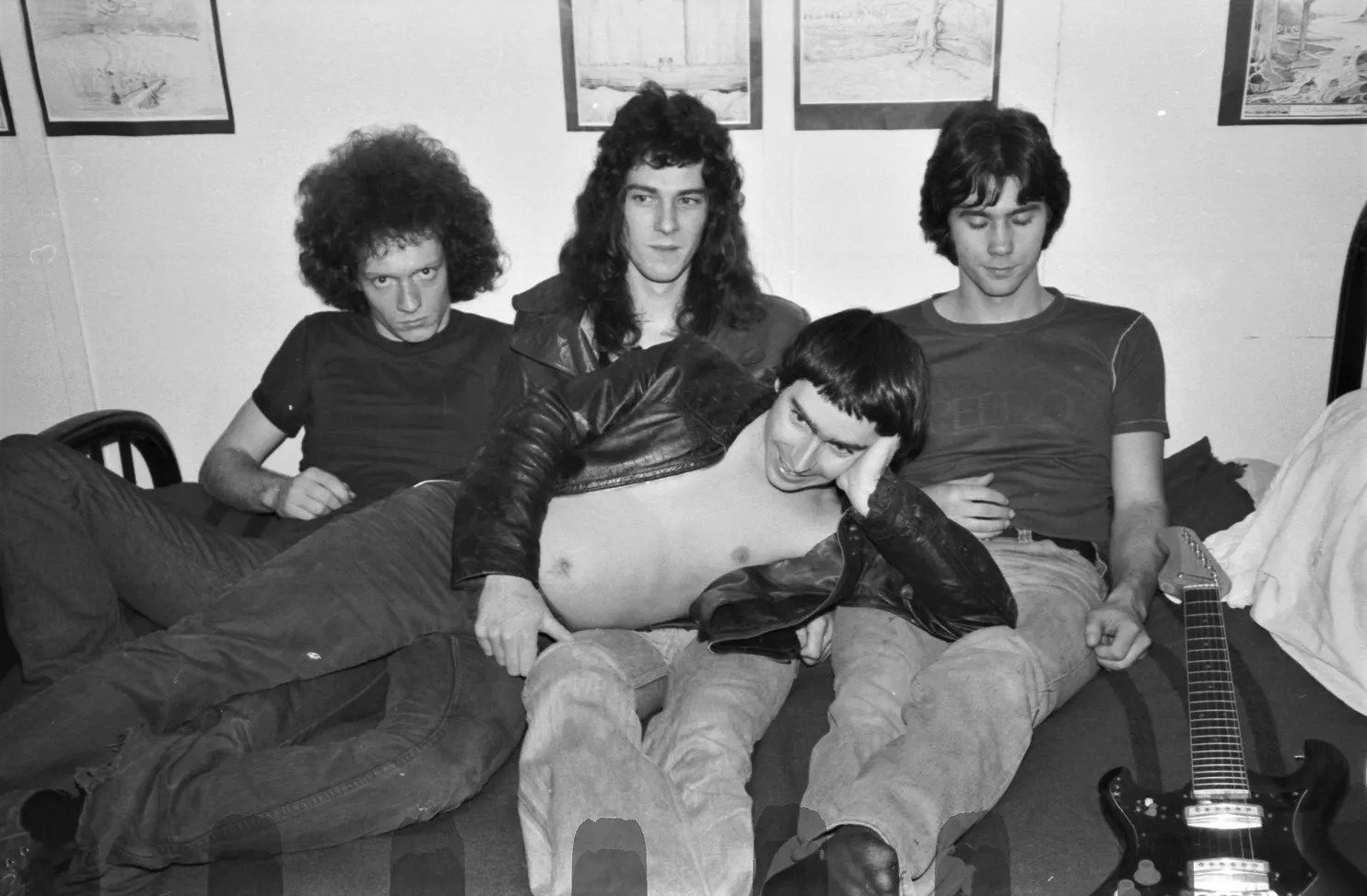
What was it like to reunite with Christoff and Park for a show at Hamilton’s Corktown Tavern on September 17, 2006? Who else was part of it?
I was surprised, myself, to be up on stage once again with the guys playing Simply Saucer songs on a borrowed Stratocaster (!) in support of a t-shirt store in Toronto and their commemorative punk clothing line!
It did feel good, I had to admit to myself to turn up the guitar and play the old set with Kevin Christoff, Steve Park, visiting from Montreal and an old friend of the band, Joe Csontos (The Forgotten Rebels). It was a bit tentative, but my electric guitar playing had basically been frozen from the seventies into a style that was just a matter of tapping back into. Wrapping my head around the lyrics was kind of weird, having been involved in a more genteel haha world for so many years.
We were asked to do another show which sold out, added Daniel Winterman on atmospheric guitar and theremin and later on Steve Foster on second guitar which beefed up our sound in a more Stonesy sense. Steve was an excellent rhythm guitar player and worked professionally as a sound man as well which did give us better stage sound and presence.
With this lineup you recorded a new album, ‘Half Human, Half Live,’ in April 2008. What was it like working on it?
We were signed by local indie label Sonic Unyon to record ‘Half Human, Half Live’ after the international success of their CD version of ‘Cyborgs Revisited’. Filmmaker, Greg Bennet, was filming a documentary on the band, yet to be released called Low Profile, the premier of Alberta name checked us at the Juno Canadian music awards show as model for of success young bands could emulate, there were offers coming to play in the U.S. and so the expectations were high going into the studio.
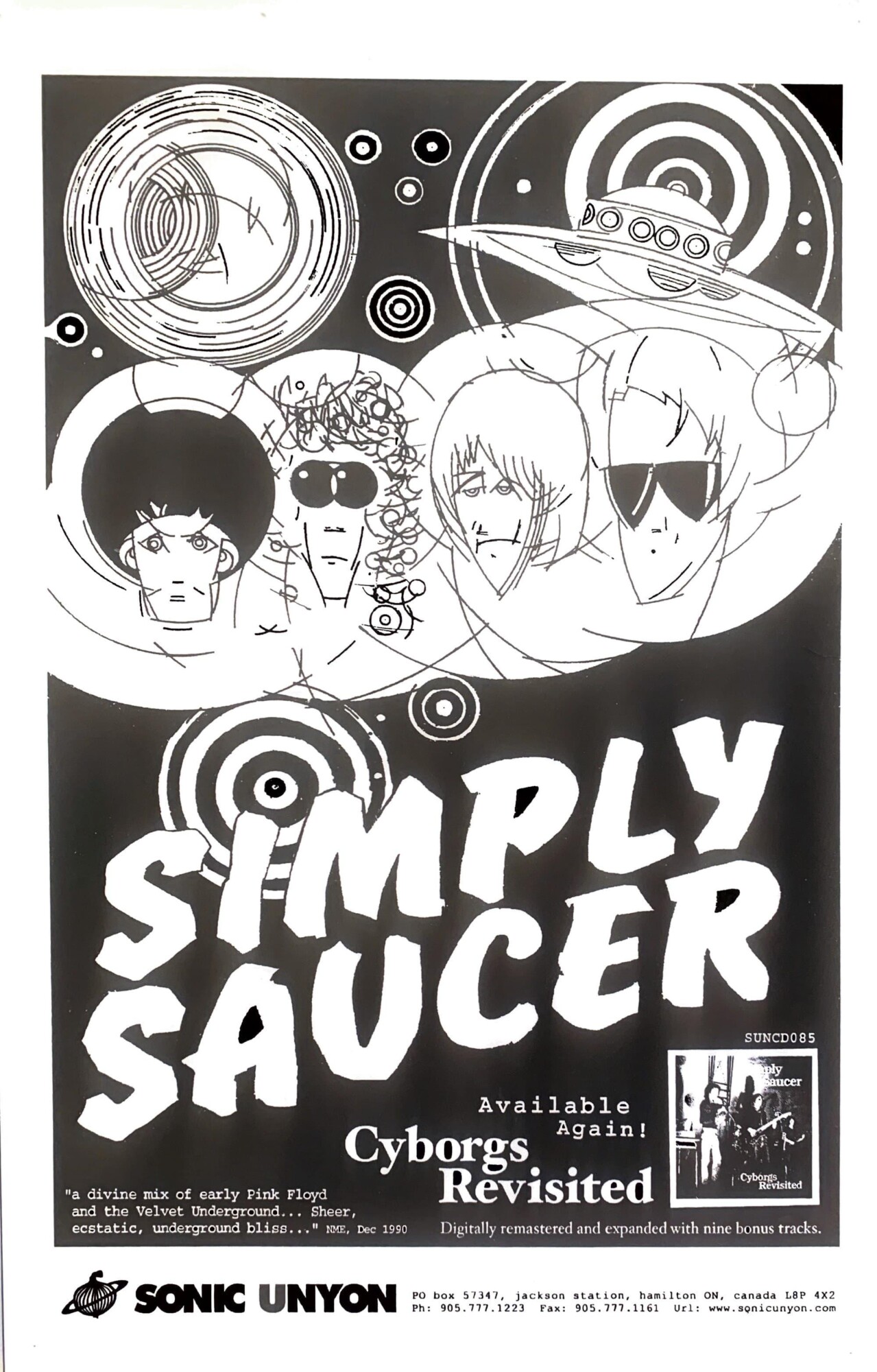
Engineering was by Duke Foster, Stephen’s brother, who would go on to become Canadian alt country music stars, Blue Rodeo’s sound manager for their tours. Steve had a hand as well, mixing and setting things up. We recorded both new and older Simply Saucer material. We decided to record a live show at the studio which was in a converted Anglican Church, called Catherine North. That became side two. Side one started with the first song Simply Saucer had ever learned, an instrumental called ‘Exit Plexit,’ which had returned to our stage show. ‘Almost Ready Betty’ was a later 70’s song, a reconstructed ‘Taking You Down’ again late seventies. ‘Dandelion Kingdom’ was a new acoustic pastoral thing. Steve played my grandfather’s late 19th century banjo on it, Daniel tinkling piano.
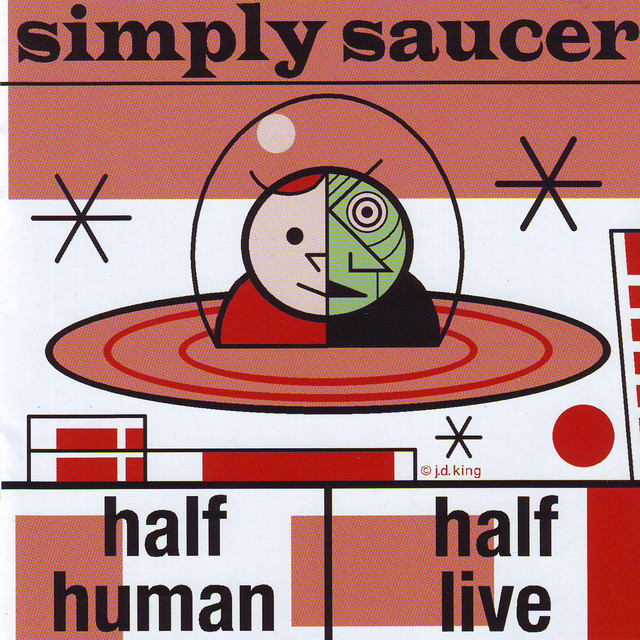
The album was well received and we began to hatch touring plans, later on going to Detroit and Chicago for shows there to promote the new album.
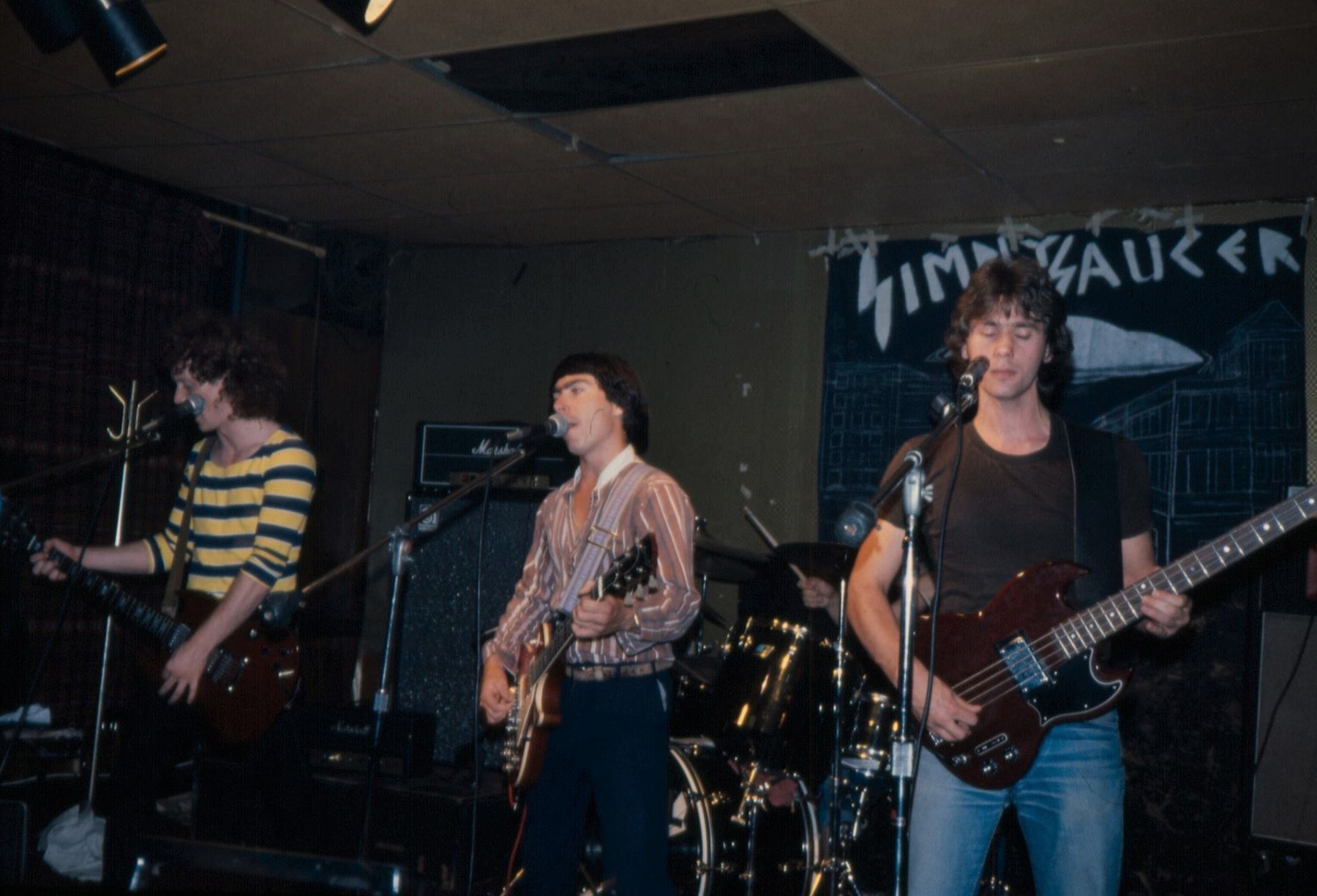
What about the singles ‘Bullet Proof Nothing’ and ‘Reckless Agitation’?
Lethbridge Alberta’s Paul Lawton had an indie record label called Mammoth Cave Recordings after the dinosaur caves just outside of the city and we have came to Toronto reached out to me through Jesse Locke, another Albertan who was planning a book about the band called Heavy Metalloid Music: The Story of Simply Saucer. So, ‘Bullet Proof Nothing,’ the obvious choice of a single off ‘Cyborgs Revisited,’ finally was released.
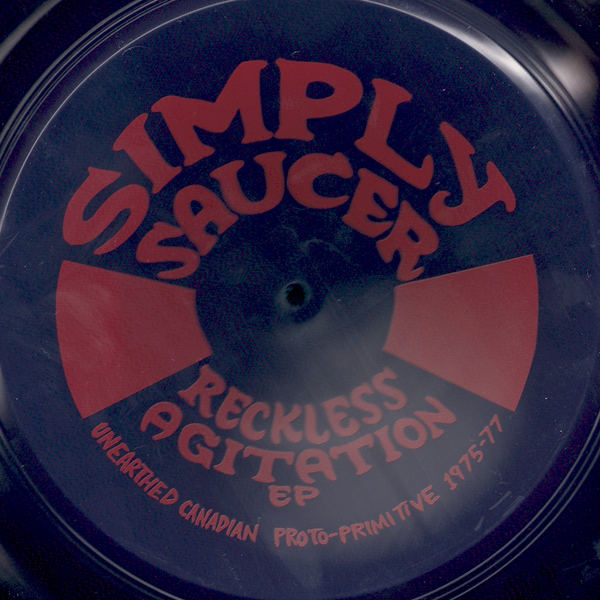
‘Reckless Agitation’ was a DIY effort to bring promo material with us on our U.S. shows and featured unreleased songs, as well Robert Sikora designed t-shirts for the U.S. swing with both Simply Saucer and our Detroit touring mates, Rocket 455, who were getting good press. Their guitar player Jeff Meier was key to getting shows there and kindly accommodated the band in his home. It was a thrill to play at the Bohemian Hall with them and get to meet great Detroit legends like Danny Kroha (Demolition Doll Rods) and Timmy V. Lampinen, Detroit’s favorite punk band. We were known in that scene by this time through ‘Cyborgs Revisited’ and amazingly had been an influence.
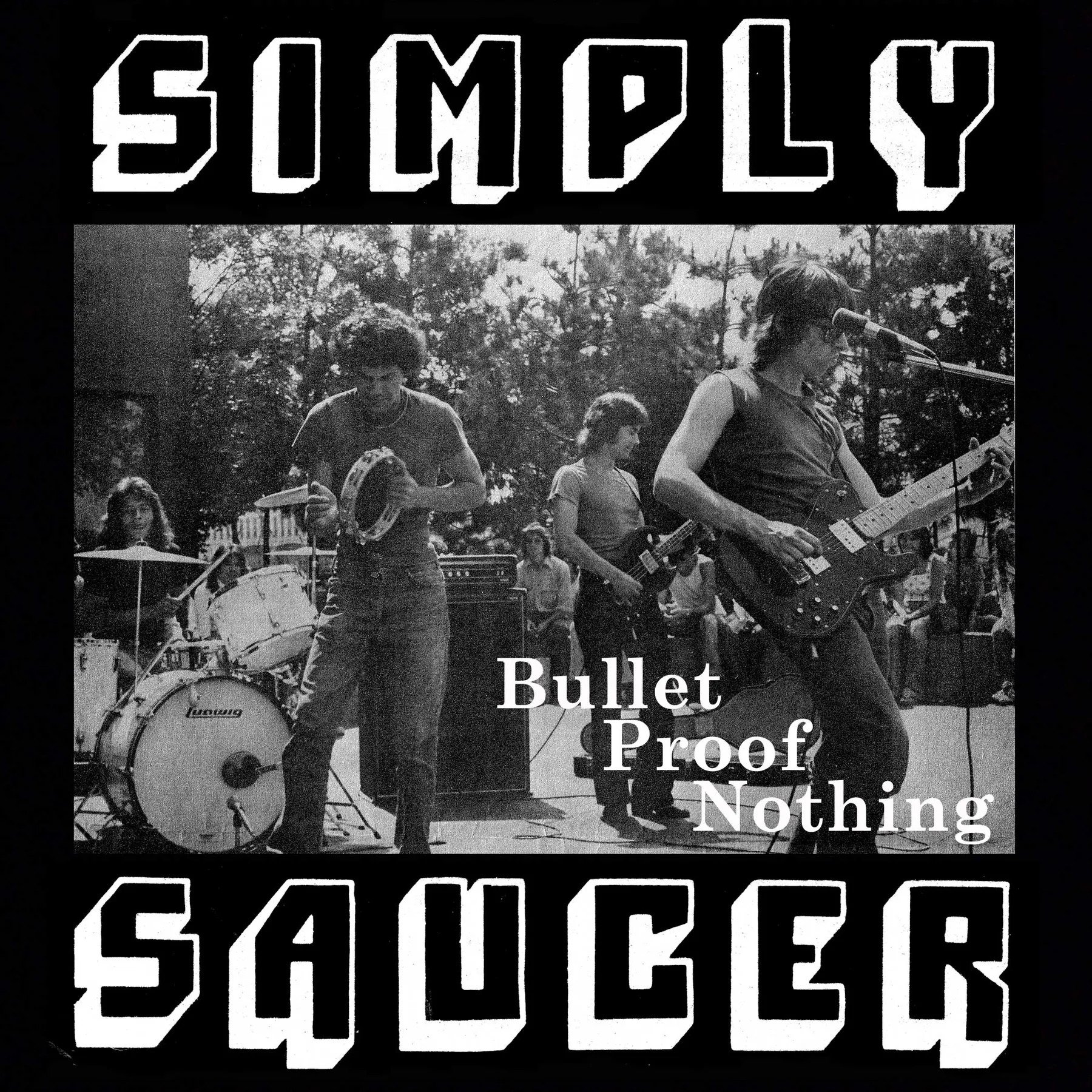
Part of the reason I’m also very happy to conduct this interview is to discuss your solo album, ‘Canadian Primitive’. That record took more than a decade, didn’t it? What was the process like?
‘Canadian Primitive’ had been recorded at the Lanois brothers at Grant Ave studio in 1989 with a band I had been gigging with for awhile, loosely called ‘Shadows of Ecstasy’. I played mainly acoustic guitar with some lead guitar work on a couple of songs. There was a homage to Nico (‘I Miss You Nico’) and Emily Dickenson (‘Hiding Place’). ‘Slow Train’ was a country blues thing and a Fahey style instrumental as well as adaptations of William Butler Yeats’ Why Should Not Old Men Be Mad? (retitled ‘Rockin’ Chair’) and Edith Sitwell’s fairy tale like ‘The King Of China’s Daughter’. ‘Pony Ride’ was an experimental live off the floor, impressionist thing.
The band consisted of Simply Saucer mainstay, Kevin Christoff, avant jazz guitar stylist, Jeff Bakalar who had lived and performed in the Czech Republic in a more reggae/jazz context, harmony singer, Compton Roberts and Paul Panchezak (Crowbar) who we had known for decades.
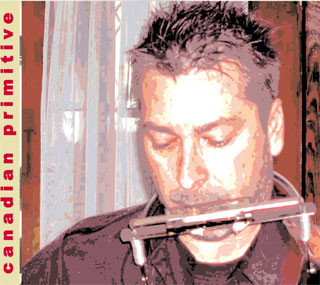
‘Hannaker Mill’ was very much in a Celtic mode, with a sectional structure.
‘Canadian Primitive’ was a compilation record from two different time periods. Some of it contained songs from the ‘Shadows of Ecstasy’ sessions which just got recently released in its entirety.
Would love it if you could share some further words about ‘Patches of Blue’ and your 2018 release ‘Edgar Breau’.
‘Patches of Blue’ was recorded at Michael J. Birthelmer’s Pine St. Studios with a cast of players, many with international reputations. On guitar I had Bill Dillon, who was part of Dan Lanois crew in his New Orleans studio. Bill played with Robbie Robertson, live and on his album, on recordings with Bob Dylan, Joni Mitchell, Peter Gabriel, The Counting Crows many others. He’s a master of slide, atmospherics, and a complete musician. Brian Grifith, was from Hamilton’s Washington family, African Canadian musical legends, and who’s grandfather Jackie Washington is a Canadian music legend. Touring black performers would stay over at the Washington residence as did Billie Holiday who Brian remembers seeing standing in the kitchen, as a child. Brian himself, who sadly passed away suddenly, is a masterful guitar player, who worked with Willie Nelson on the Dan Lanois produced album. He was inspiring to work with. Ed Roth, was a Grant Ave producer and arranger and has long roots in the Toronto music scene going back to his sixties work on keyboard with The Ugly Ducklings, The Tripp and with an early Rick James band that worked out of L.A. called Salt and Pepper. He’s also on the sixties ‘Merryweather’ LP on Capitol Records. Ed did the orchestral arrangements on the album closer, ‘Dandelion Kingdom’. Joe Clark, who played fiddle and mandolin was a Virginia U.S.A. born bluegrass/country session playing phenom with a stint in Nashville and extensive touring in the American South. Mike Trebilcock, who plays with the current touring Simply Saucer band, is the founder and lead singer/guitar player with 90’s Canadian power pop sensations The Killjoys. Colina Phillips, a top drawer session singer from Toronto who has worked with everyone live and in the studio, Bryan Adams, Alice Cooper, Ray Charles, David Clayton Thomas, Bruce Cockburn contributed signature backing vocals. As always, Kevin Christoff and Paul Panchezak turned in stellar performances, both up for Hamilton Music Awards for this album. Kevin won bass player of the year award. The album got multiple nominations and excellent reviews here and abroad. Michael Birthelmer, gets a lot of credit for putting it all together, helping arrange and his stellar production. Mike is also a Grant Ave Studio alumni.
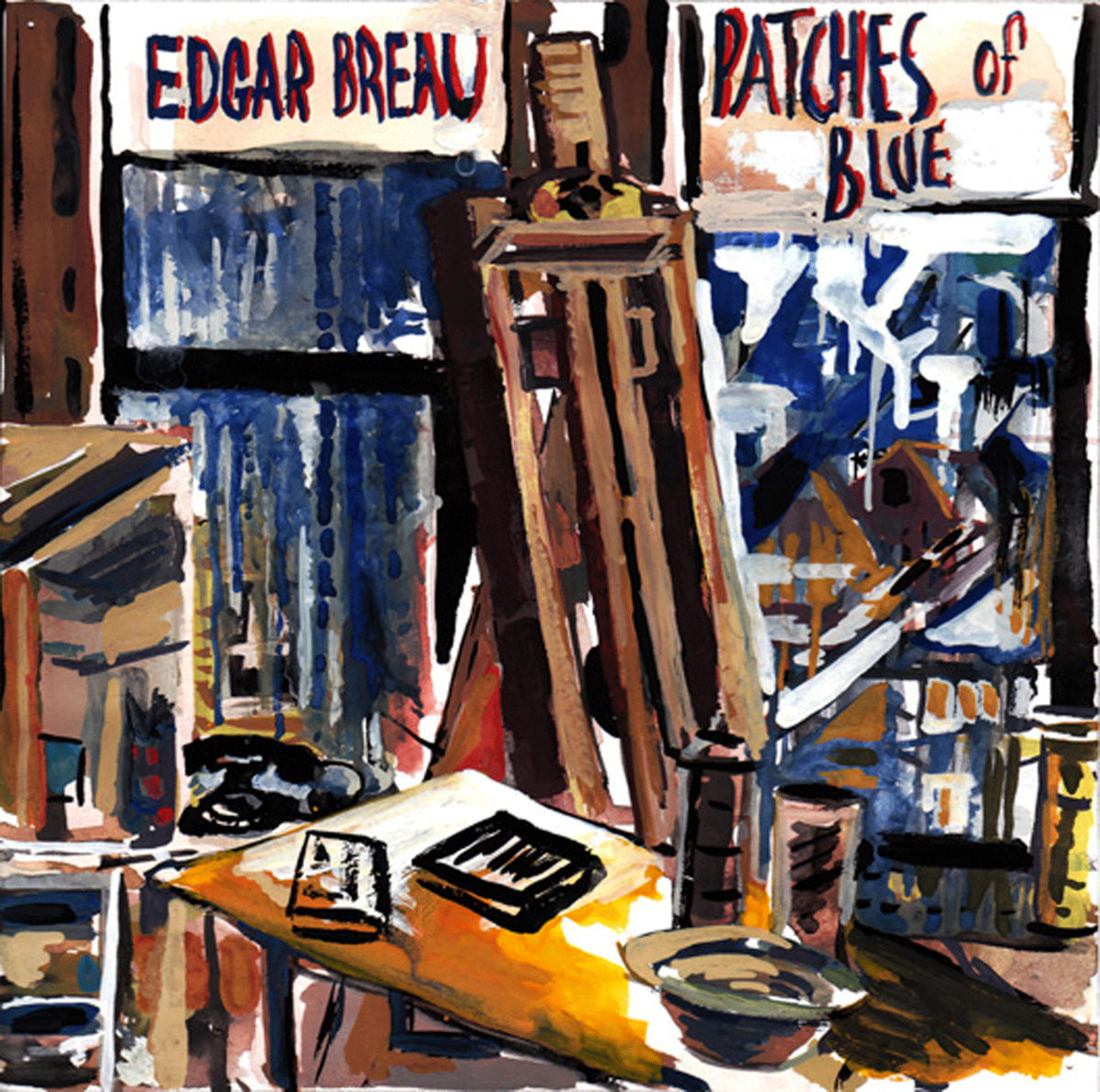
My self-titled album was awarded an Ontario Arts Council Grant and was very much a concept album with some dense production values, atmospheric and cinematic style production from Adam Bentley and Jordan Mitchell out of their TAPE music studio.
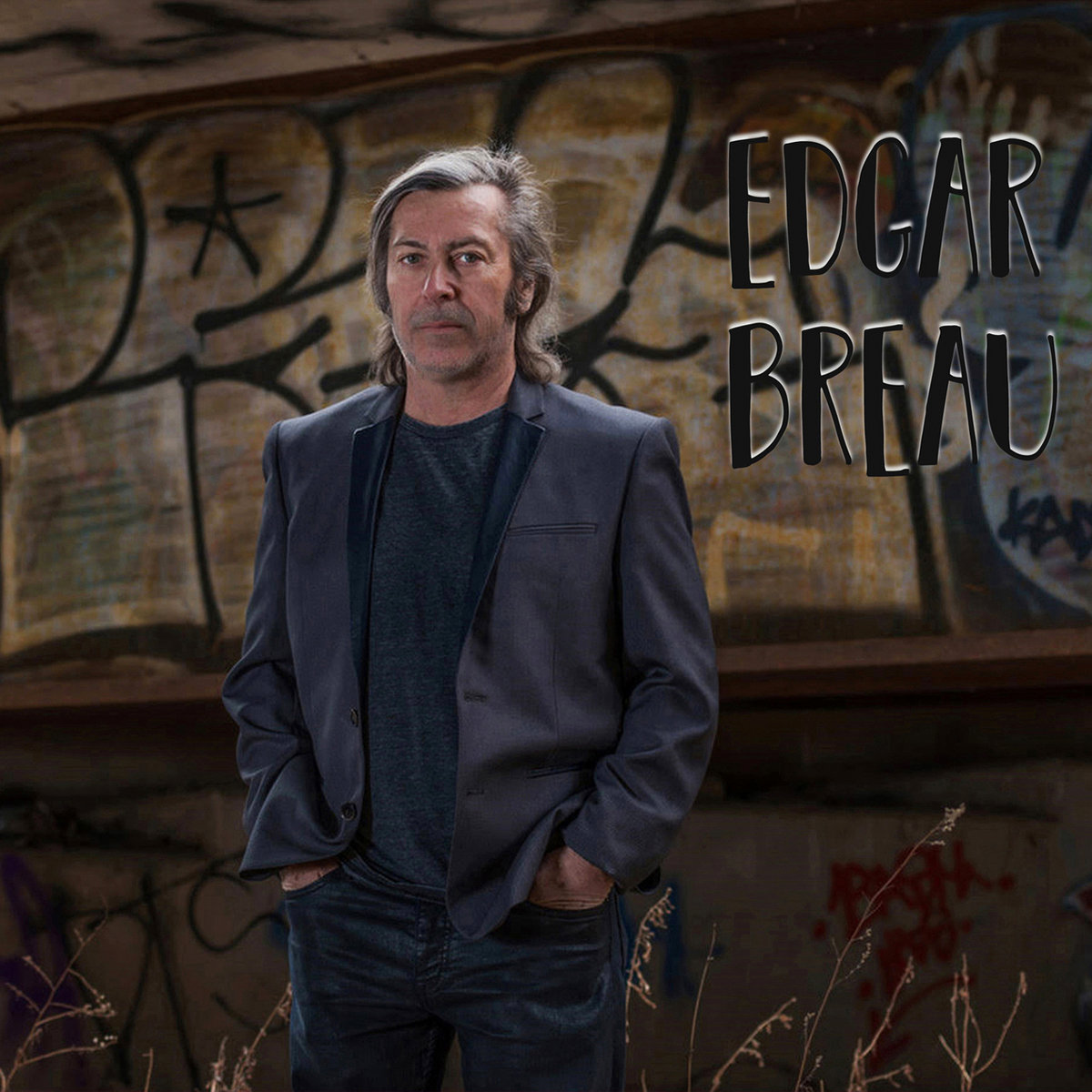
William Butler Yeats’ ‘He Wishes His Beloved Were Dead’ opens the ‘Edgar Breau’ album with treated autoharp, cello and haunting wordless backing vocals from Colina Phillips. I’m on vocals, acoustic guitar and harp. East coast music critic Bob Mersereau commenting on the haunting acoustic landscapes wrote “short stories with developed characters, marvelous laid back sound, trippy and rewarding’. In our pre-recording discussions we referenced the strings on Nico’s ‘Chelsea Girls’ and Bobby Gentry’s ‘Ode to Billie Joe’ and enlisted the much accomplished Anna Jarvis on cello along with Katie Wolsely on violin. University of Toronto medieval music program educated Gaven Dianda played Afghan Rubab, sitar, Dilruba and Glockenspiel. This time Blue Rodeo drummer Glen Milchem was on the drum kit and of course Kevin Christoff throughout. The centre piece ‘Mount Idaho’ has 122 separate tracks evoking the magic of that mountain from a visit to British Columbia.
What about the archive recordings of ‘Shadows of Ecstasy’?
‘Shadows of Ecstasy’ was recorded during a tumultuous period in my life with ever growing family demands and the pause I took during the final months of recording stretched ever longer. Some of it became part of a later project, ‘Canadian Primitive,’ but only recently has it been released as originally envisioned fully intact. Very much having a “band” sound as the personnel on the record had gigged extensively before going into the studio.
That would be along with myself on the acoustic and electric guitars (a borrowed Fender Telecaster) Simply Saucer mainstay, Kevin Christoff, avant jazz instructed Jeff Bakalar on the Guild electric guitar, of Czech background and having lived and performed there in reggae/jazz incarnations, Compton Roberts, harmony vocals and Paul Panchezak on drums. Many late night sessions at Grant Ave. Johnnie Johnstone wrote in Shindig “This delightful, largely acoustic affair, recalls the likes of the Go-Betweens and The Chills while anticipating the new wave of Americana (Wilco, Son Volt) to come.”
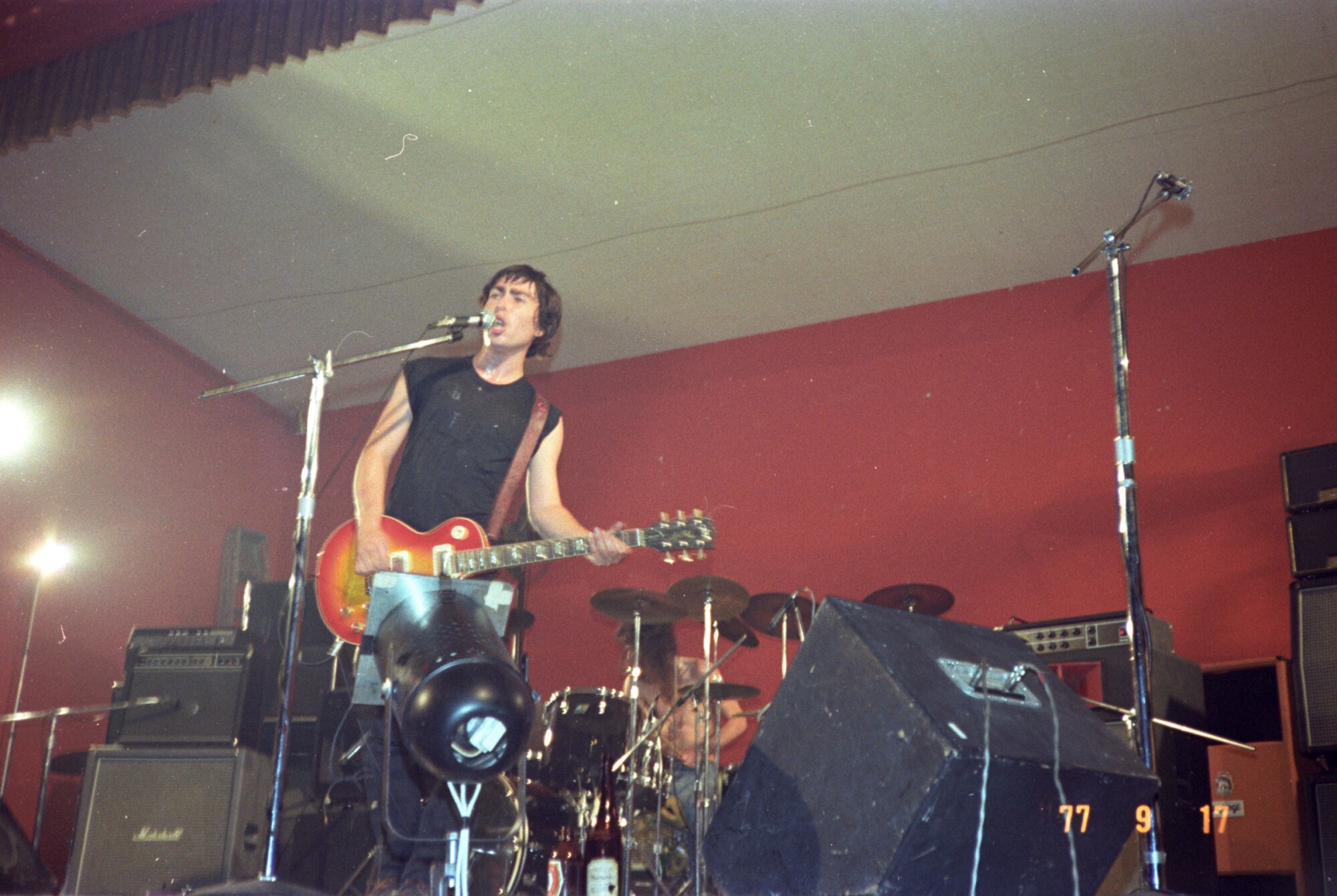
Looking back, what was the highlight of your time in the band? Which songs are you most proud of? Where and when was your most memorable gig?
Touring the U.S. playing festivals here and down there has been a gas and meeting some many nice people along the way, fans of the band, other musicians who have been inspired by the recordings we did in the seventies is a gratifying crown to our early turbulence. The present lineup which includes Mike Trebilcock, the Killjoys founder and film score arranger, with long time member Kevin Christoff and (on the American dates) Craig Bell (Rocket from the Tombs) rocks out on stage. We’ve also toured with Ed Roth on the keys. Playing with these great musicians is something very special.
Is there any unreleased material left of the band or solo or from any original member?
Yes, I have an upcoming solo album release, ex Saucer David Byers released three fine albums with his band The Shangs. Early founder, now sadly passed away keyboard player, Paul Colilli released two albums. There is a Simply Saucer 45 ‘Lo-Fi Garage Symphonette’ b/w ‘Alien Cornfield’ intended to be a part of a future compilation package.
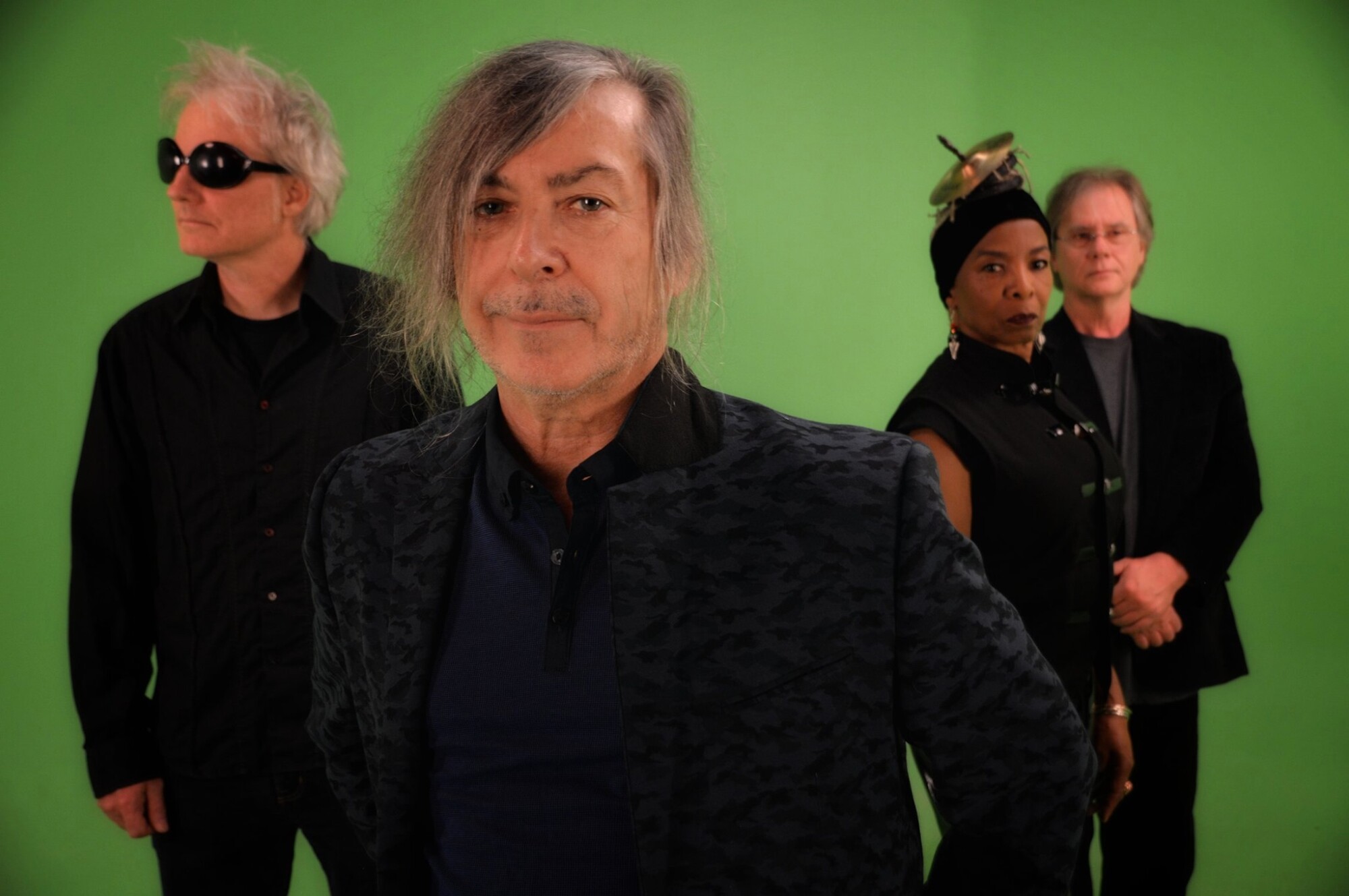
Let’s end this interview with some of your favourite albums.
Favorite albums I’ve just found are this 7 LP Wanda Landowska J.S. Bach set on RCA Victor from 1958 from a thrift store, Bola Sete’s ‘Ocean,’ Sarah Vaughn’s ‘In Hi-Fi,’ Jonathan Richman’s ‘Ishkode! Ishkode!’.
Klemen Breznikar
Headline photo: Simply Saucer at the Beverley Tavern (1977)
Simply Saucer Official Website / Facebook / Twitter

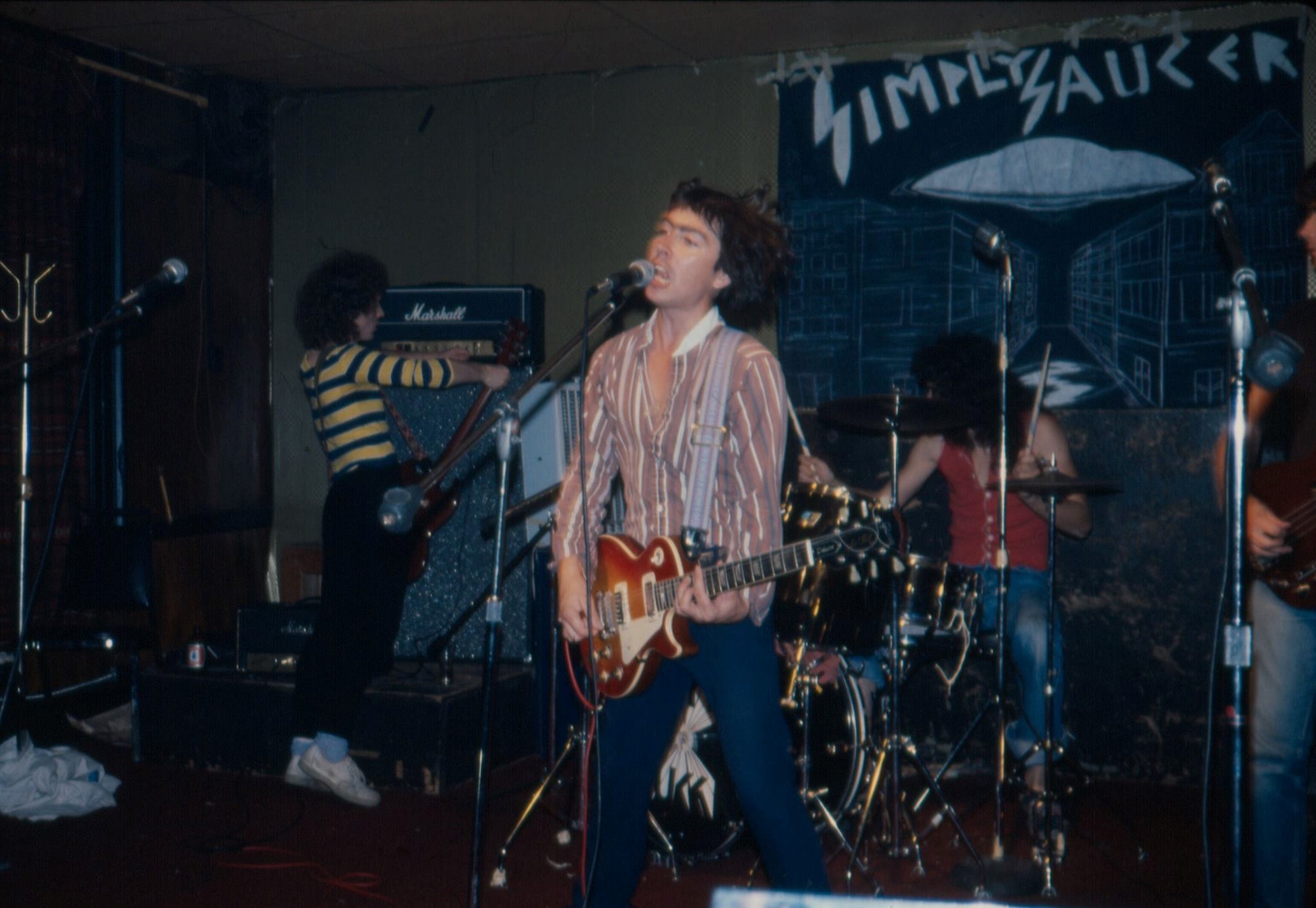
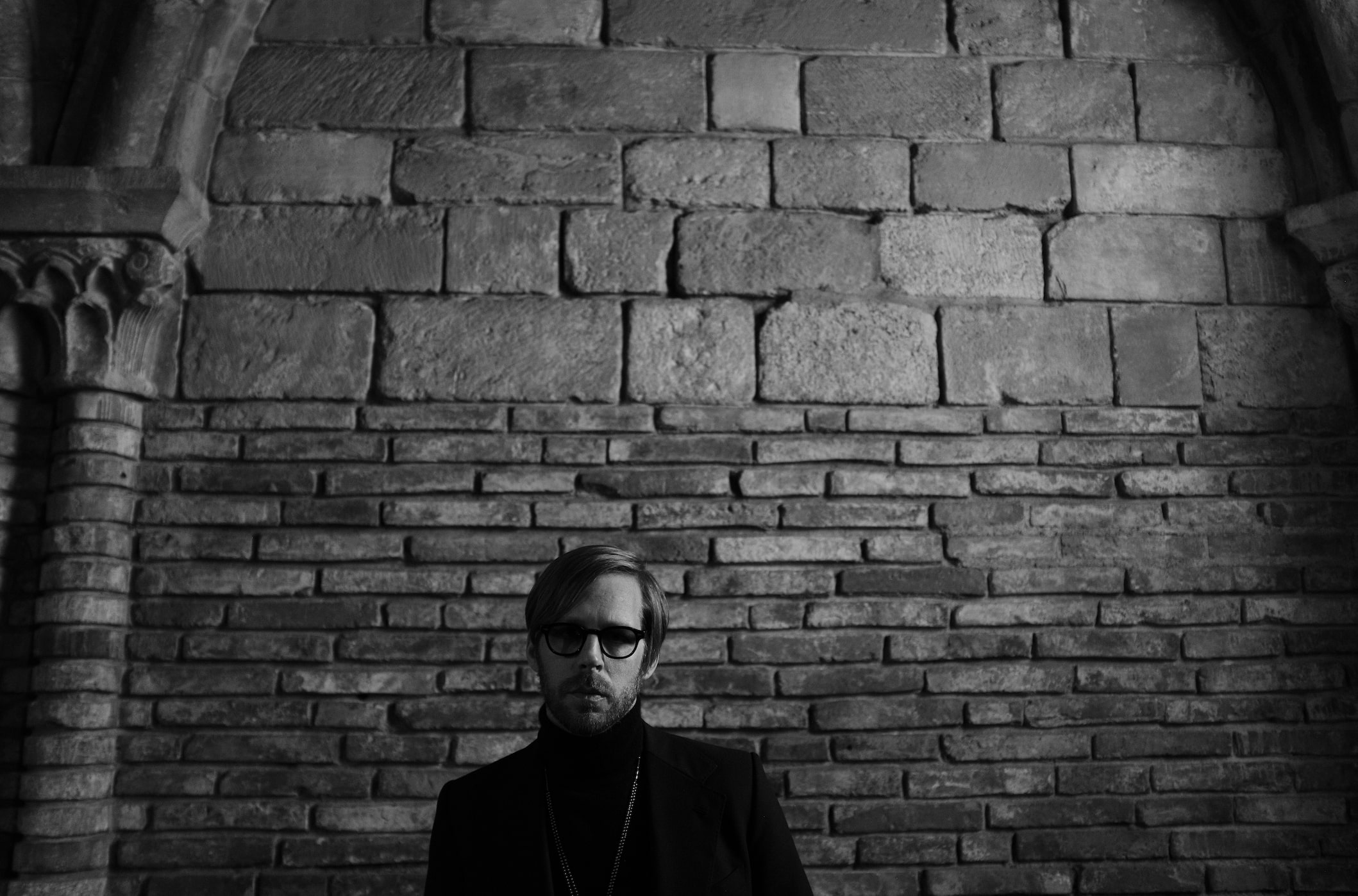
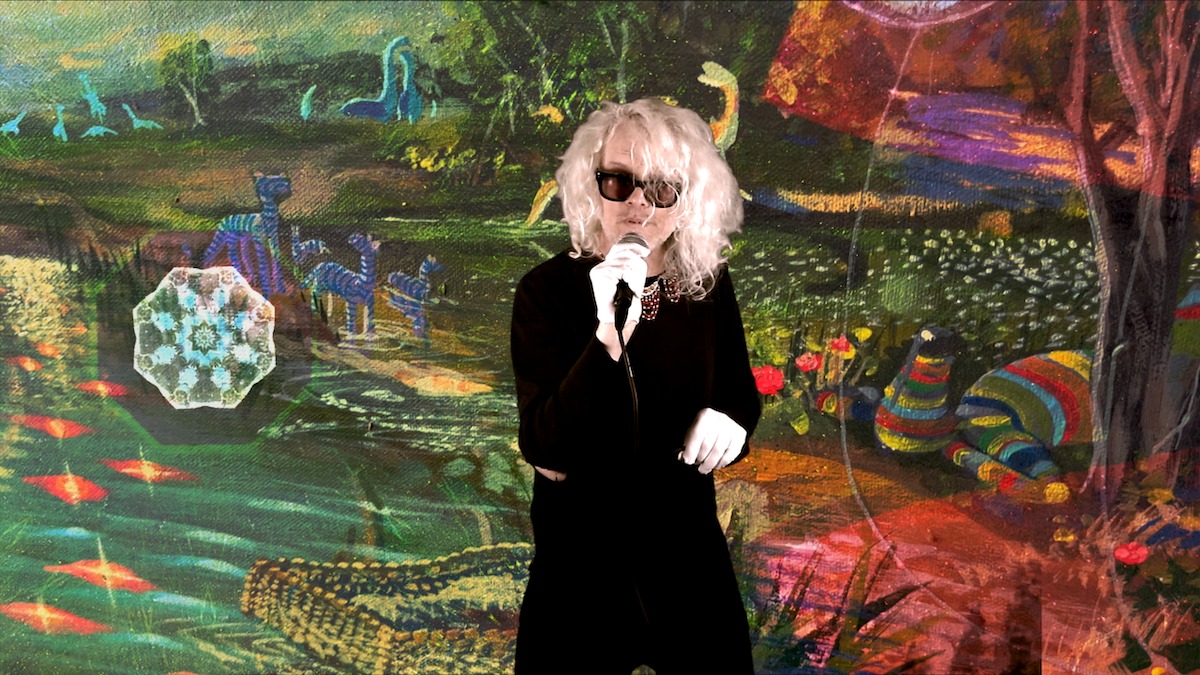
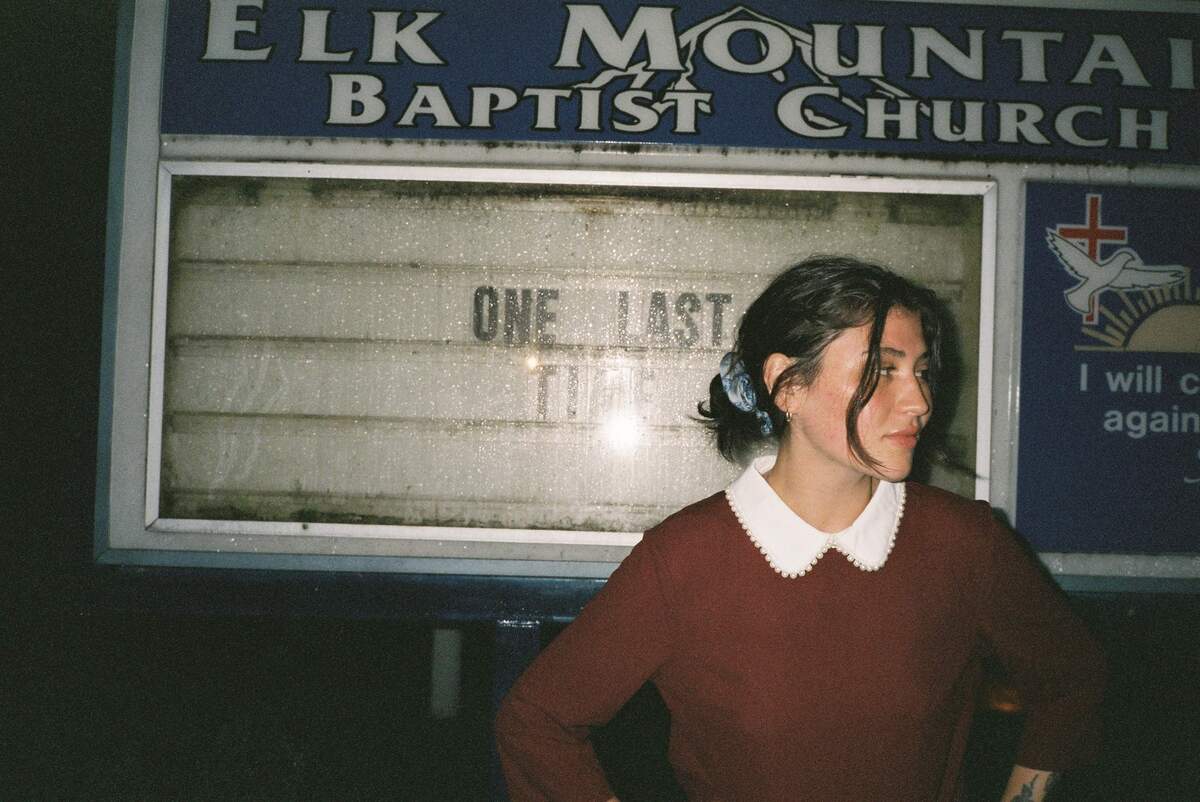
Good to see the band featured here. “Cyborgs Revisited” is one of the most notable Proto-Punk recordings. Nice to see Edgar Breau relate his distinguished career and it’s nice to read he’s a literary enthusiast too.